1. Overview
Elizabeth Cady Stanton (November 12, 1815 - October 26, 1902) was a pivotal American writer and activist who led the women's rights movement in the United States during the mid-to-late 19th century. She was the primary force behind the 1848 Seneca Falls Convention, the first gathering solely dedicated to discussing women's rights, and was the chief author of its influential Declaration of Sentiments. Her bold demand for women's suffrage at the convention, initially controversial, swiftly became a central tenet of the burgeoning women's movement. Beyond suffrage, Stanton's progressive vision encompassed a wide array of issues, including women's parental rights, property rights, employment and income rights, divorce reform, family financial well-being, and birth control. She was also a staunch advocate for the abolition of slavery and the temperance movement.
Stanton's activism, particularly after the American Civil War, led to a significant split within the women's rights movement. She, alongside Susan B. Anthony, vehemently opposed the ratification of the 14th and 15th Amendments to the U.S. Constitution, which granted legal protection and voting rights exclusively to African American men. Their stance stemmed from the belief that extending rights only to men, while denying them to both Black and white women, would exacerbate gender inequality. This position, combined with her views on Christian theology and other women's issues beyond suffrage, led to the formation of separate women's rights organizations, which eventually merged. Stanton later served as the president of the unified organization after stepping back from the immediate leadership of the movement for nearly two decades. Throughout her life, she authored numerous articles and pamphlets on women's suffrage and rights, and published her groundbreaking work, The Woman's Bible, and her autobiography, Eighty Years and More, leaving an indelible mark on the fight for social justice and equality.
2. Early Life and Background
Elizabeth Cady Stanton's formative years were shaped by a prominent family environment and intellectual influences that instilled in her an early awareness of gender inequality and a strong drive for social reform.
2.1. Childhood and Family Background
Elizabeth Cady was born on November 12, 1815, in Johnstown, New York, the eighth of eleven children to Daniel Cady and Margaret Livingston Cady. Five of her siblings died in infancy or early childhood. Her older brother, Eleazar, who attended Union College in Schenectady, New York, died at the age of 20, leaving Elizabeth as the eldest surviving child. Five of her sisters, including Elizabeth, lived to adulthood and old age. Stanton later named two of her daughters Margaret and Harriot, after her sisters.
Her father, Daniel Cady, was a renowned lawyer who served one term in the United States Congress as a member of the Federalist Party, and later became a justice of the New York Supreme Court (1814-1817) and a circuit court judge (1847). Judge Cady fostered an early interest in law and social activism in his daughter Elizabeth, as well as in his eldest daughter's husband, Edward Bayard. Even as a young girl, Stanton enjoyed reading her father's law books and debating legal issues with his law clerks at the dinner table. This early exposure to the legal system made her recognize how disproportionately laws favored men, especially married men, over women, who had virtually no custody rights over their own children, nor rights to property, income, or employment. This realization set her on a path to change these inequities.
Her mother, Margaret Livingston Cady, descended from early Dutch settlers, and her father, Colonel James Livingston, was an officer in the Continental Army during the American Revolutionary War. Livingston fought in the Battle of Saratoga and the Battle of Quebec (1775), and later helped capture Major John André at West Point, New York, who was Benedict Arnold's accomplice in a plot to surrender West Point to the British. Margaret Cady was described as unusually tall for a woman of her time, leading her father to affectionately call her "the Queen." However, Stanton's own recollections of her mother differed from those of her daughter, Harriot Stanton Blatch, who remembered Margaret as cheerful, warm, and generous. Margaret Cady suffered emotionally and became depressed due to the loss of so many of her children.
Due to her mother's depression and her father's demanding career, much of the responsibility for raising the younger children fell to Stanton's sister Tryphena, who was eleven years her senior, and Tryphena's husband, Edward Bayard. Edward, a former classmate of Eleazar at Union College, was interning at Daniel Cady's law firm when he became engaged to Tryphena. Through her brother-in-law, Stanton gained a deeper understanding of the explicit and implicit gender hierarchy within the legal system.
Slavery in New York State persisted until July 4, 1827. Like many men of his time, Stanton's father owned slaves. Peter Teabout, a former slave of the Cady family who was later freed in Johnstown, cared for Stanton and her sister Margaret. While Stanton rarely mentioned Teabout being their slave in her public speeches, she fondly recalled him in her autobiography, Eighty Years & More, noting her joy in attending Episcopal church services with him, where she and her sisters sat with him in the back of the church rather than in the front with other white families. However, her unwavering commitment to abolitionism seems to have been more significantly influenced by her visits to her cousin, Gerrit Smith, in Peterboro, New York, where she was exposed to the abolitionist movement.
2.2. Education and Intellectual Development
Stanton received a more extensive formal education than most women of her era. She graduated from Johnstown Academy in her hometown at the age of 16. As the only girl in advanced mathematics and foreign language classes, she excelled, winning second prize in the school's Greek competition and becoming a skilled debater. She enjoyed her time at the school and stated that she did not encounter any gender-based barriers there.
In her autobiography, Stanton recalls feeling her father undervalued female education. She credits their neighbor, Reverend Simon Hosack, with strongly persuading her father to cultivate her intellect. In 1826, after the death of her older brother Eleazar, Stanton, then ten years old, wrote a letter to her grieving father, expressing her desire to be all her brother had been. Her father's response, "Oh my daughter, I wish you were a boy!", left her disheartened. This incident led her to believe that her father valued sons over daughters. She confided in Reverend Hosack, who, despite her father's initial misgivings, firmly believed in her potential and gradually helped to change her father's perspective. Hosack continued to teach her Greek, encouraged extensive reading, and upon his death, bequeathed her his Greek dictionary from his library. Stanton attributed her growing confidence and self-esteem to this consistent intellectual validation.
After graduating from Johnstown Academy, Stanton experienced her first direct encounter with sex discrimination. She was disappointed to see that many of her male classmates, despite having inferior academic records, went on to attend Union College, as her brother Eleazar had. In 1830, instead of Union College, Stanton enrolled at the Troy Female Seminary in Troy, New York, founded by Emma Willard.
Stanton recounted that during her student days in Troy, she was deeply troubled by a six-week religious revival led by Charles Grandison Finney, an evangelical preacher and a central figure in the revivalist movement. His preaching, combined with the Calvinistic Presbyterianism of her childhood, instilled in her a profound fear of her own damnation. She wrote, "Fear of judgment seized my soul. Visions of the lost haunted my dreams. Mental anguish prostrated my health."
Stanton credited her father and brother-in-law, Edward Bayard, with convincing her to disregard Finney's warnings. She said they took her on a six-week trip to Niagara Falls, during which she read works by rational philosophers that restored her reason and sense of balance. She recalled, "As religious superstitions gave way to scientific facts and logical thought, everything began to appear in a new light, and I felt happier every day." She never returned to organized Christianity after this experience, consistently asserting that logic and a humanitarian ethic were the best guides for both thought and action.
Stanton maintained a critical distance from all religions, not just Christianity. She believed that "all the religions on the face of the earth degrade her [women], and so long as woman accepts the position that they assign her, her emancipation is impossible." She further believed that theological study naturally led to the rejection of religion, and that people should be freed from religious delusion. In her autobiography, she described convincing friends that religion was a mental delusion: "We all went through all the stages of theological experience, from the uncertain realm of superstition and speculation to the solid ground of science and reason."
3. Marriage and Family Life
Stanton's personal life, particularly her marriage and role as a mother, significantly influenced her advocacy for women's rights, demonstrating her commitment to equality within the domestic sphere.
3.1. Marriage and Partnership with Henry Stanton
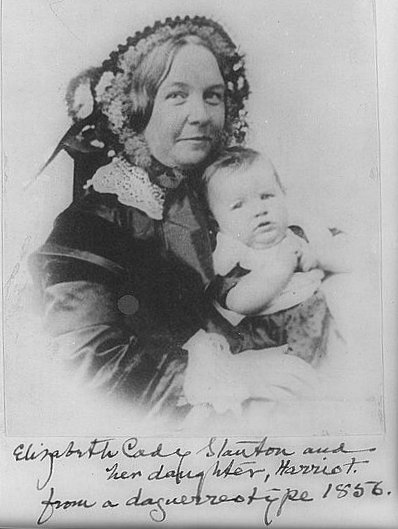
As a young woman involved in the temperance and abolitionist movements, Elizabeth Cady met Henry Brewster Stanton, a prominent abolitionist agent and a close acquaintance of her cousin, Gerrit Smith. Henry was also a member of the "Secret Six", a group that financed John Brown's raid on Harpers Ferry. Despite her conservative father Daniel Cady's reservations, the couple married in 1840. During the ceremony, Elizabeth Cady insisted on omitting the word "obey" from her vows, later writing, "I obstinately refused to obey one with whom I supposed I was entering into an equal relation." While uncommon, this practice was not unheard of, as Quakers had been omitting "obey" from their marriage ceremonies for some time.
Stanton adopted her husband's surname as part of her own, signing herself Elizabeth Cady Stanton or E. Cady Stanton, but she steadfastly refused to be called Mrs. Henry B. Stanton. She asserted her individuality, stating, "When women are called Mrs. John Somebody, Mrs. Tom Somebody, and black people are called Sambo or Zip Coon, it is a derogatory term based on the principle that white people rule everything."
Soon after their European honeymoon, the Stantons moved into the Cady household in Johnstown, where Henry studied law under his father-in-law. In 1843, they relocated to Boston (Chelsea), Massachusetts, after Henry joined a law firm. In Boston, Elizabeth thrived on the constant social, political, and intellectual stimulation provided by abolitionist gatherings. Here, she was influenced by figures such as Frederick Douglass, William Lloyd Garrison, Louisa May Alcott, and Ralph Waldo Emerson.
In 1847, concerned that New England winters negatively affected Henry's health, the Stantons moved to a house in upstate New York, purchased for them by Elizabeth's father. Their new home, now part of the Women's Rights National Historical Park, was located on the outskirts of Seneca Falls, New York, at the northern end of Cayuga Lake in the Finger Lakes region.
The marriage was not without its tensions and disagreements. Henry, like Elizabeth's father, opposed the idea of women's suffrage. Henry's work as a lawyer and politician often kept him away from home for nearly ten months of the year, leading to the couple living apart more often than together, maintaining separate households for several years. Sarah Grimke, an abolitionist reformer, expressed concern about their differing views on women's rights in a letter to Elizabeth in 1842, advising her that Henry needed a more loyal and devoted wife, and she needed the same. Nevertheless, their marriage, which lasted 47 years, was generally successful, ending only with Henry Stanton's death in 1887.
3.2. Children and Household
The couple had seven children, four of whom were born after their move to Seneca Falls. Stanton claimed her children were conceived through a practice she called "voluntary motherhood," reflecting her belief that women should have control over their sexual relationships and childbirth in an era when wives were expected to submit to their husbands' sexual demands. One historian concluded that the spacing of their children's births suggests the Stantons must have used birth control methods. Stanton also challenged societal norms by raising a flag in front of her house after giving birth-red for a boy, white for a girl-a subject usually handled with great delicacy.
Stanton adopted homeopathic practices and encouraged her children to play outdoors and engage in a wide range of interests and learning. She aimed to be a mother who allowed her children equal say and provided them with a solid and advanced education. Her daughter Margaret remembered her as "cheerful, sunny and indulgent." While she enjoyed motherhood and managing a large household, Stanton found herself unsatisfied and even depressed by the lack of intellectual companionship and stimulation in Seneca Falls.
During this period, when she was relatively isolated from other social reformers, Stanton maintained contact with Susan B. Anthony, often writing speeches for Anthony to deliver. Her letters to Anthony frequently expressed the difficulties of balancing domestic life with public life in a society biased against women. To combat boredom and loneliness, she became increasingly involved in her local community, forming a network with like-minded women in 1848. This prepared her for the organized activism that would soon emerge in the early women's rights movement.
Six of the seven Stanton children graduated from college. While higher education was closed to women when Stanton sought it, both of her daughters, Margaret Livingston Stanton Lawrence and Harriot Stanton Blatch, attended Vassar College. Margaret graduated in 1876 and also attended Columbia University in 1891. Harriot earned her bachelor's degree from Vassar in 1878 and a master's degree in 1891. Harriot initially enrolled in a master's program in France, which she abandoned after becoming engaged, but later earned her master's degree from Vassar at the age of 35.
After 1884, Henry began spending more time at their home in Tenafly, New Jersey. In 1885, just before his 80th birthday, he published a short autobiography, Random Recollections, in which he mentioned marrying the daughter of the famous Judge Cady but did not provide her name until the third edition. He died in 1887 while Elizabeth was in England visiting their daughter.
4. Early Activism and Social Reform
Stanton's early involvement in social reform movements laid the groundwork for her foundational contributions to women's rights advocacy, expanding her focus from specific issues to a broader challenge against gender inequality.
4.1. Abolitionist Activity
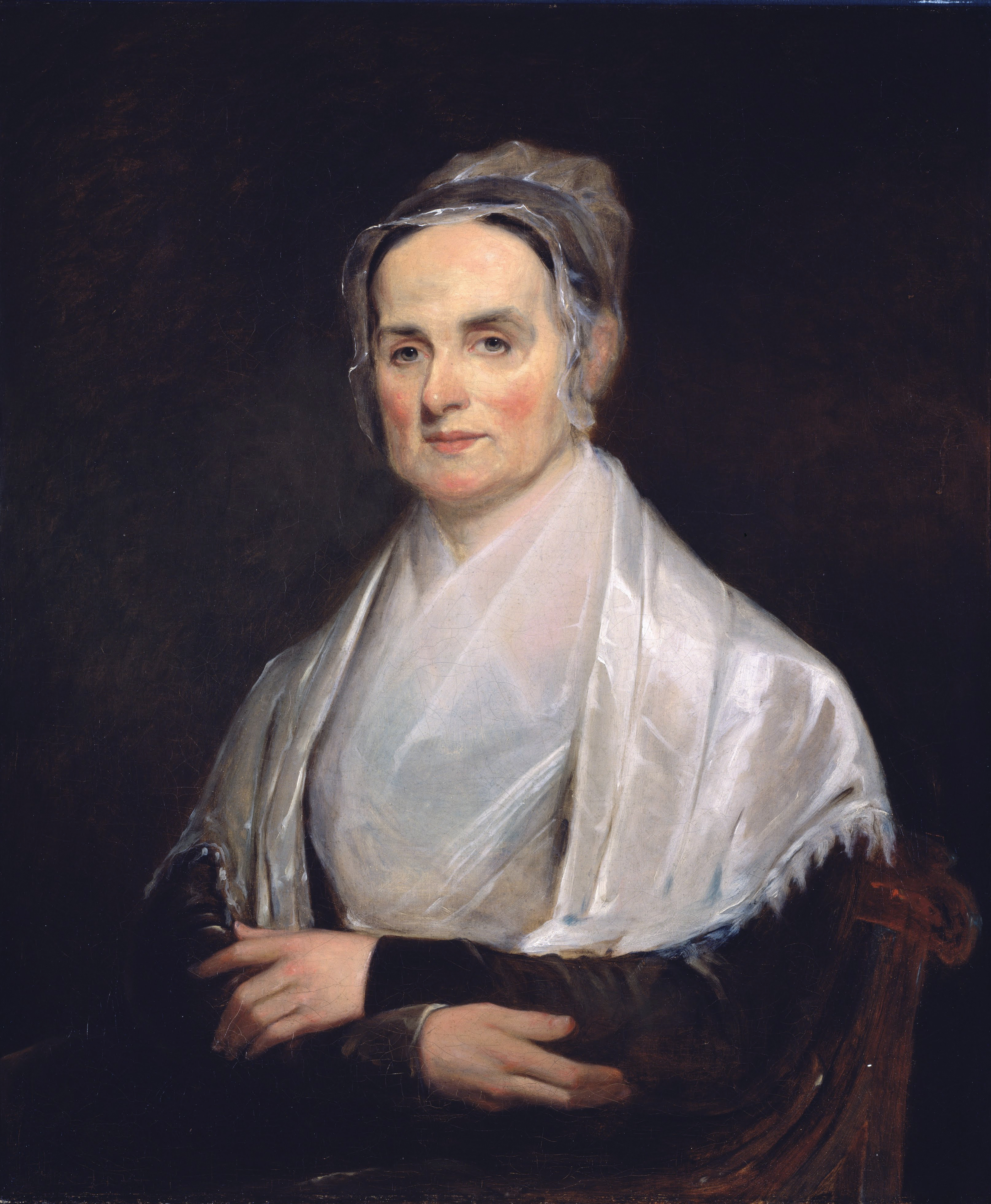
In 1840, while on their honeymoon in England, the Stantons attended the World Anti-Slavery Convention in London. Elizabeth was appalled when male delegates voted to prevent women from participating, even those who had been appointed as official delegates by their respective abolitionist societies, such as Lucretia Mott. The women were relegated to a separate section, hidden from the proceedings by curtains. William Lloyd Garrison, a prominent American abolitionist and supporter of women's rights, arrived after the vote and refused to sit with the men, choosing instead to sit with the excluded women in protest.
Mott, a Quaker minister, abolitionist, and women's rights advocate, quickly formed an enduring friendship with Stanton, who eagerly learned from the more experienced activist. In London, Stanton heard Mott preach in a Unitarian chapel, marking the first time Stanton had witnessed a woman deliver a sermon or speak publicly. Stanton later credited this convention with focusing her interests squarely on women's rights.
In 1860, Stanton published a pamphlet titled The Slave's Appeal, written from the imagined viewpoint of a female slave. The fictional speaker used vivid religious language, expressing views very different from Stanton's own, and described the horrors of slavery, particularly the sexual exploitation of enslaved women. The pamphlet called for defiance of the Federal Fugitive Slave Act and included petitions to oppose the practice of hunting escaped slaves.
In 1861, Anthony organized a tour of abolitionist lecturers in upstate New York, which included Stanton and other speakers. The tour began in January, just after South Carolina had seceded from the Union but before other states had seceded and before the outbreak of the Civil War. In her speech, Stanton compared South Carolina to a willful son jeopardizing the family, suggesting secession might be the best course. The lecture meetings were repeatedly disrupted by mobs who believed abolitionist activity was causing southern states to secede. Stanton was often unable to participate in some lectures because she had to return home to her children, and at her husband's urging, she eventually left the tour due to the persistent threat of violence.
4.2. Seneca Falls Convention and the Declaration of Sentiments
A culmination of experiences profoundly affected Stanton. The London convention had been a turning point, and her study of law books convinced her that legal changes were essential to overcome gender inequities. She had also personally experienced the stifling role of women as wives and housekeepers. She articulated her growing discontent, stating, "the wearied, anxious look of the majority of women, impressed me with a strong feeling that some active measures should be taken to remedy the wrongs of society in general, and of women in particular." This realization, however, did not immediately translate into action, as she felt isolated from other social reformers and fully occupied with household duties, unsure how to engage in social reform.
In the summer of 1848, Lucretia Mott traveled from Pennsylvania to attend a Quaker meeting near the Stanton's home. Stanton was invited to visit with Mott and three other progressive Quaker women. Finding herself in sympathetic company, Stanton recounted pouring out her "long-accumulating discontent, with such vehemence and indignation that I stirred myself, as well as the rest of the party, to do and dare anything." The women agreed to organize a women's rights convention in Seneca Falls a few days later, while Mott was still in the area.
Stanton was the primary author of the convention's Declaration of Rights and Sentiments, which was modeled on the United States Declaration of Independence. Its list of grievances included the wrongful denial of women's right to vote, signaling Stanton's intent to generate a discussion of women's suffrage at the convention. This was a highly controversial idea at the time, though not entirely new, as her cousin Gerrit Smith had called for women's suffrage shortly before. When Henry Stanton saw the inclusion of women's suffrage in the document, he told his wife that she was acting in a way that would turn the proceedings into a farce. Lucretia Mott, the main speaker, was also initially disturbed by the proposal.
An estimated 300 women and men attended the two-day Seneca Falls Convention. In her first address to a large audience, Stanton explained the purpose of the gathering and the importance of women's rights. Following a speech by Mott, Stanton read the Declaration of Sentiments, which attendees were invited to sign. Next came the resolutions, all of which the convention adopted unanimously except for the ninth, which read, "it is the duty of the women of this country to secure to themselves the sacred right of the elective franchise." Following a vigorous debate, this resolution was adopted only after Frederick Douglass, an abolitionist leader who had formerly been enslaved, gave it his strong support. Stanton's sister Harriet attended the convention and signed the Declaration of Sentiments, though her husband later made her remove her signature.
Although this was a local convention organized on short notice, its controversial nature ensured it was widely noted in the press across major cities. The Seneca Falls Convention is now recognized as a historic event, the first convention called for the purpose of discussing women's rights. Its Declaration of Sentiments became "the single most important factor in spreading news of the women's rights movement around the country in 1848 and into the future," according to historian Judith Wellman. The convention initiated the use of women's rights conventions as organizing tools for the early women's movement, and by the time of the second National Women's Rights Convention in 1851, the demand for women's right to vote had become a central tenet of the United States women's rights movement.
A Rochester Women's Rights Convention was held two weeks later, organized by local women who had attended the Seneca Falls gathering. Both Stanton and Mott spoke at this convention. While the Seneca Falls Convention had been chaired by a man, James Mott, the Rochester convention was chaired by a woman, Abigail Bush, another historic first. Many were disturbed by the idea of a woman chairing a convention of both men and women. Stanton herself initially opposed the election of a woman as chair but later acknowledged her mistake and apologized.
When the first National Women's Rights Convention was organized in 1850, Stanton was unable to attend due to pregnancy. Instead, she sent a letter titled "Should women hold office," outlining the movement's goals and emphatically endorsing women's right to hold office, stating that women could have a "purifying, elevating, softening influence" on the "political experiment of our Republic." Thereafter, it became a tradition to open national women's rights conventions with a letter by Stanton, who did not participate in person in a national convention until 1860.
4.3. Partnership with Susan B. Anthony
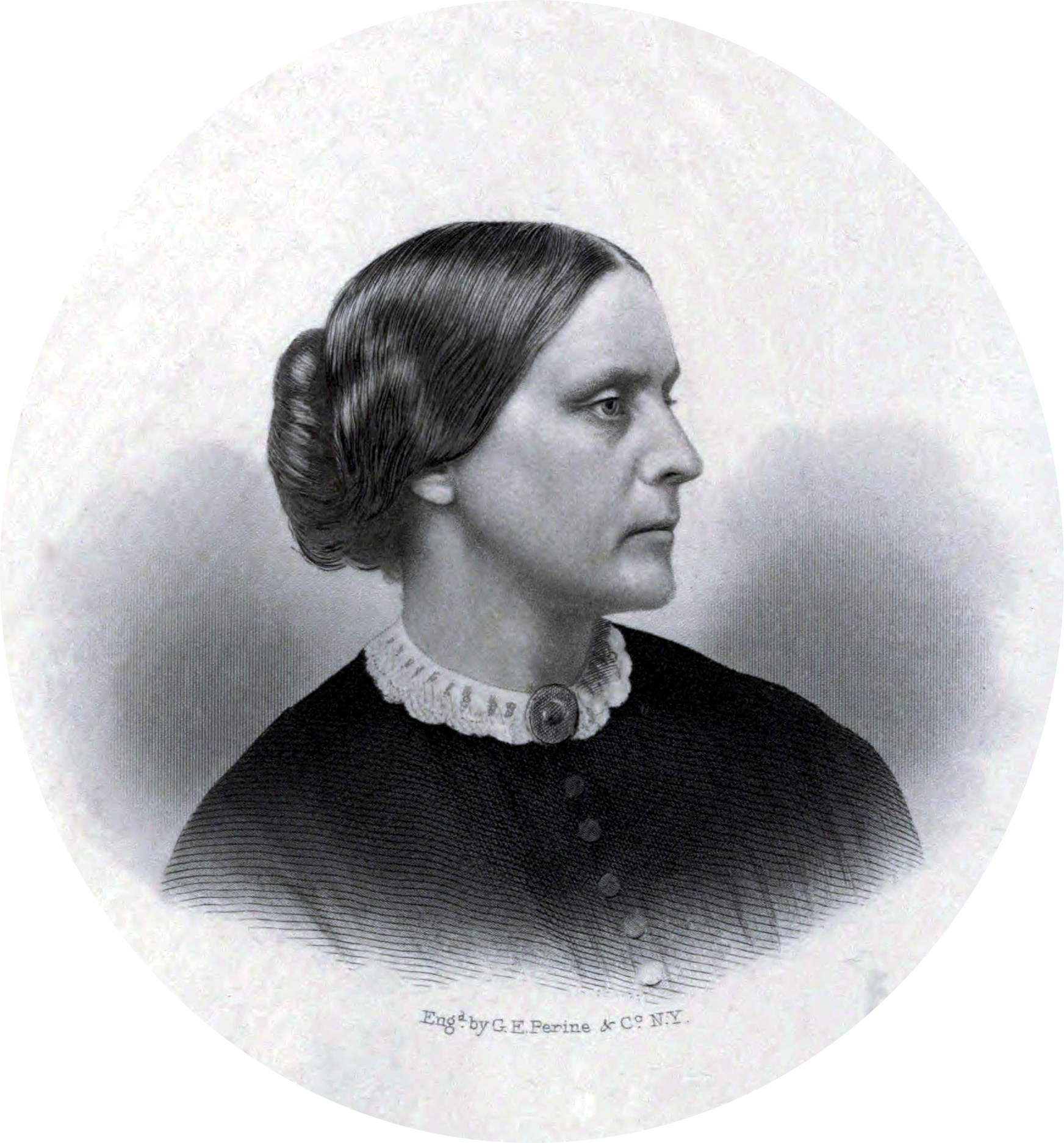
In 1851, while visiting Seneca Falls, Susan B. Anthony was introduced to Stanton by Amelia Bloomer, a mutual friend and women's rights supporter. Anthony, five years Stanton's junior, came from a Quaker family active in reform movements. They quickly became close friends and collaborators, forming a decades-long partnership crucial to the development of the women's rights movement.
The two women possessed complementary skills. Anthony excelled at organizing, while Stanton had an aptitude for intellectual matters and writing. Stanton later remarked, "In writing we did better work together than either could alone. While she is slow and analytical in composition, I am rapid and synthetic. I am the better writer, she the better critic." Anthony often deferred to Stanton throughout their collaboration, never accepting an office in any organization that would place her above Stanton. In their letters, they addressed each other as "Susan" and "Mrs. Stanton."
Because Stanton was often homebound with seven children, while Anthony was unmarried and free to travel, Anthony assisted Stanton by supervising her children, which allowed Stanton to write speeches for Anthony to deliver. One of Anthony's biographers noted, "Susan became one of the family and was almost another mother to Mrs. Stanton's children." A Stanton biographer described their dynamic: "Stanton provided the ideas, rhetoric, and strategy; Anthony delivered the speeches, circulated petitions, and rented the halls. Anthony prodded and Stanton produced." Stanton's husband famously quipped, "Susan stirred the puddings, Elizabeth stirred up Susan, and then Susan stirs up the world!" Stanton herself declared, "I forged the thunderbolts, she fired them."
By 1854, Anthony and Stanton "had perfected a collaboration that made the New York State movement the most sophisticated in the country," according to women's history professor Ann D. Gordon. After the Stantons moved from Seneca Falls to New York City in 1861, a room was always set aside for Anthony in every house they lived in. One of Stanton's biographers estimated that, over her lifetime, Stanton spent more time with Anthony than with any other adult, including her own husband.
In December 1865, Stanton and Anthony submitted the first women's suffrage petition directed to Congress during the drafting of the Fourteenth Amendment. They challenged the use of the word "male" in the version submitted to the states for ratification. When Congress failed to remove the language, Stanton announced her candidacy as the first woman to run for Congress in October 1866. She ran as an independent and secured only 24 votes, but her candidacy sparked conversations surrounding women's officeholding separate from suffrage. In December 1872, Stanton and Anthony each wrote "New Departure" memorials to Congress and were invited to read them to the Senate Judiciary Committee, further bringing women's suffrage and officeholding to the forefront of Congress's agenda, even though the New Departure agenda was ultimately rejected.
Their relationship, while productive, was not without its strains. Anthony, who lacked Stanton's charm and charisma, once remarked in 1871, "whoever goes into a parlor or before an audience with that woman does it at the cost of a fearful overshadowing, a price which I have paid for the last ten years, and that cheerfully, because I felt that our cause was most profited by her being seen and heard, and my best work was making the way clear for her."
4.4. Temperance Activity
Excessive alcohol consumption was a severe social problem in the mid-19th century. Many activists viewed the temperance movement as a women's rights issue because existing laws gave husbands complete control over the family and its finances. Women had almost no recourse against a drunken husband, even if his condition left the family destitute and he was abusive. If a wife managed to obtain a divorce, which was difficult, the husband could easily retain sole guardianship of their children.
In 1852, Susan B. Anthony was elected as a delegate to the New York state temperance convention. When she attempted to participate in the discussion, the chairman stopped her, stating that women delegates were there only to listen and learn. Anthony later observed, "No advanced step taken by women has been so bitterly contested as that of speaking in public. For nothing which they have attempted, not even to secure the suffrage, have they been so abused, condemned and antagonized." Anthony and other women walked out and announced their intention to organize a women's temperance convention. Later that year, about five hundred women met in Rochester and created the Women's State Temperance Society, with Stanton as president and Anthony as state agent. This leadership arrangement, with Stanton in the public role as president and Anthony as the energetic force behind the scenes, became characteristic of the organizations they founded in later years.
In her first public speech since 1848, Stanton delivered the convention's keynote address, which antagonized religious conservatives. She called for drunkenness to be legal grounds for divorce at a time when many conservatives opposed divorce for any reason. She appealed for wives of drunkard husbands to take control of their marital relations, stating, "Let no woman remain in relation of wife with the confirmed drunkard. Let no drunkard be the father of her children." She also attacked the religious establishment, urging women to donate their money to the poor instead of to the "education of young men for the ministry, for the building up a theological aristocracy and gorgeous temples to the unknown God."
At the organization's convention the following year, conservatives voted Stanton out as president, leading her and Anthony to resign from the organization. Temperance remained a secondary reform activity for Stanton afterward, though she continued to use local temperance societies in the early 1850s as conduits for advocating women's rights. She regularly wrote articles for The Lily, a monthly temperance newspaper she helped transform into one that reported news of the women's rights movement. She also wrote for The Una, a women's rights periodical edited by Paulina Wright Davis, and for the New York Tribune, a daily newspaper edited by Horace Greeley.
4.5. Married Women's Property Act
The legal status of married women in the 19th century was largely dictated by English common law and the doctrine of coverture, which held that wives were under the protection and control of their husbands. As William Blackstone wrote in his 1769 Commentaries on the Laws of England, "By marriage, the husband and wife are one person in law: that is, the very being or legal existence of the woman is suspended during the marriage." A husband became the owner of any property his wife brought into the marriage. A married woman could not sign contracts, operate a business in her own name, or retain custody of her children in the event of a divorce. While some American courts followed common law, some Southern states, like Texas and Florida, provided more equality for women, and state legislatures across the country were increasingly passing legislation to move away from common law traditions.
In 1836, the New York legislature began considering a Married Women's Property Act, with women's rights advocate Ernestine Rose being an early supporter who circulated petitions. Stanton's father, Daniel Cady, supported this reform because, having no sons to pass his considerable wealth to, he faced the prospect of it eventually falling under the control of his daughters' husbands. Stanton actively circulated petitions and lobbied legislators in favor of the proposed law as early as 1843.
The law eventually passed in New York in 1848. It allowed a married woman to retain property she possessed before or acquired during marriage, and protected her property from her husband's creditors. Enacted shortly before the Seneca Falls Convention, this act strengthened the women's rights movement by increasing women's ability to act independently. By weakening the traditional belief that husbands spoke for their wives, it supported many of the reforms Stanton championed, such as the right of women to speak in public and to vote.
In 1853, Susan B. Anthony organized a petition campaign in New York state for an improved property rights law for married women. As part of the presentation of these petitions to the legislature, Stanton spoke in 1854 to a joint session of the Judiciary Committee, arguing that voting rights were needed to enable women to protect their newly won property rights. In 1860, Stanton spoke again to the Judiciary Committee, this time before a large audience in the assembly chamber, arguing that women's suffrage was the only real protection for married women, their children, and their material assets. She drew parallels between the legal status of women and slaves, stating, "The prejudice against color, of which we hear so much, is no stronger than that against sex. It is produced by the same cause, and manifested very much in the same way. The negro's skin and the woman's sex are both prima facie evidence that they were intended to be in subjection to the white Saxon man." The legislature passed the improved law in 1860.
4.6. Dress Reform
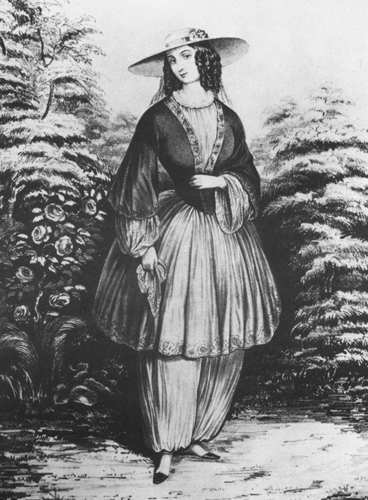
In 1851, Elizabeth Smith Miller, Stanton's cousin, introduced a new style of dress to upstate New York. Unlike traditional floor-length dresses, it consisted of pantaloons worn under a knee-length dress. Amelia Bloomer, Stanton's friend and neighbor, publicized this attire in The Lily, a monthly magazine she published. The outfit became popularly known as the "Bloomer" dress, or simply "Bloomers". Many female reform activists soon adopted it despite harsh ridicule from traditionalists, who viewed women wearing any form of trousers as a threat to the social order. To Stanton, the Bloomer dress offered a practical solution to the problem of climbing stairs with a baby in one hand and a candle in the other, while also needing to lift the skirt of a long dress to avoid tripping. Stanton wore "Bloomers" for two years, abandoning the attire only after it became clear that the controversy it generated was distracting people from the broader campaign for women's rights. Other women's rights activists eventually followed suit.
4.7. Divorce Reform
Stanton had already antagonized traditionalists in 1852 at the women's temperance convention by advocating a woman's right to divorce a drunken husband. In an hour-long speech at the Tenth National Women's Rights Convention in 1860, she went further, generating a heated debate that occupied an entire session. She cited tragic examples of unhealthy marriages, suggesting that some marriages amounted to "legalized prostitution." She challenged both the sentimental and religious views of marriage, defining marriage as a civil contract subject to the same restrictions as any other contract. If a marriage did not produce the expected happiness, she argued, then it would be a duty to end it. Strong opposition to her speech was voiced in the ensuing discussion. Abolitionist leader Wendell Phillips argued that divorce was not a women's rights issue because it affected both women and men equally, and he unsuccessfully tried to have the subject removed from the record.
In later years on the lecture circuit, Stanton's speech on divorce was one of her most popular, attracting audiences of up to 1200 people. In an 1890 essay entitled "Divorce versus Domestic Warfare," Stanton opposed calls by some women activists for stricter divorce laws, stating, "The rapidly increasing number of divorces, far from showing a lower state of morals, proves exactly the reverse. Woman is in a transition period from slavery to freedom, and she will not accept the conditions and married life that she has heretofore meekly endured."
5. Civil War Era and Post-War Activities
During the Civil War and its aftermath, Stanton continued her fervent activism, forming new organizations and navigating ideological splits that reshaped the women's rights movement.
5.1. Women's Loyal National League
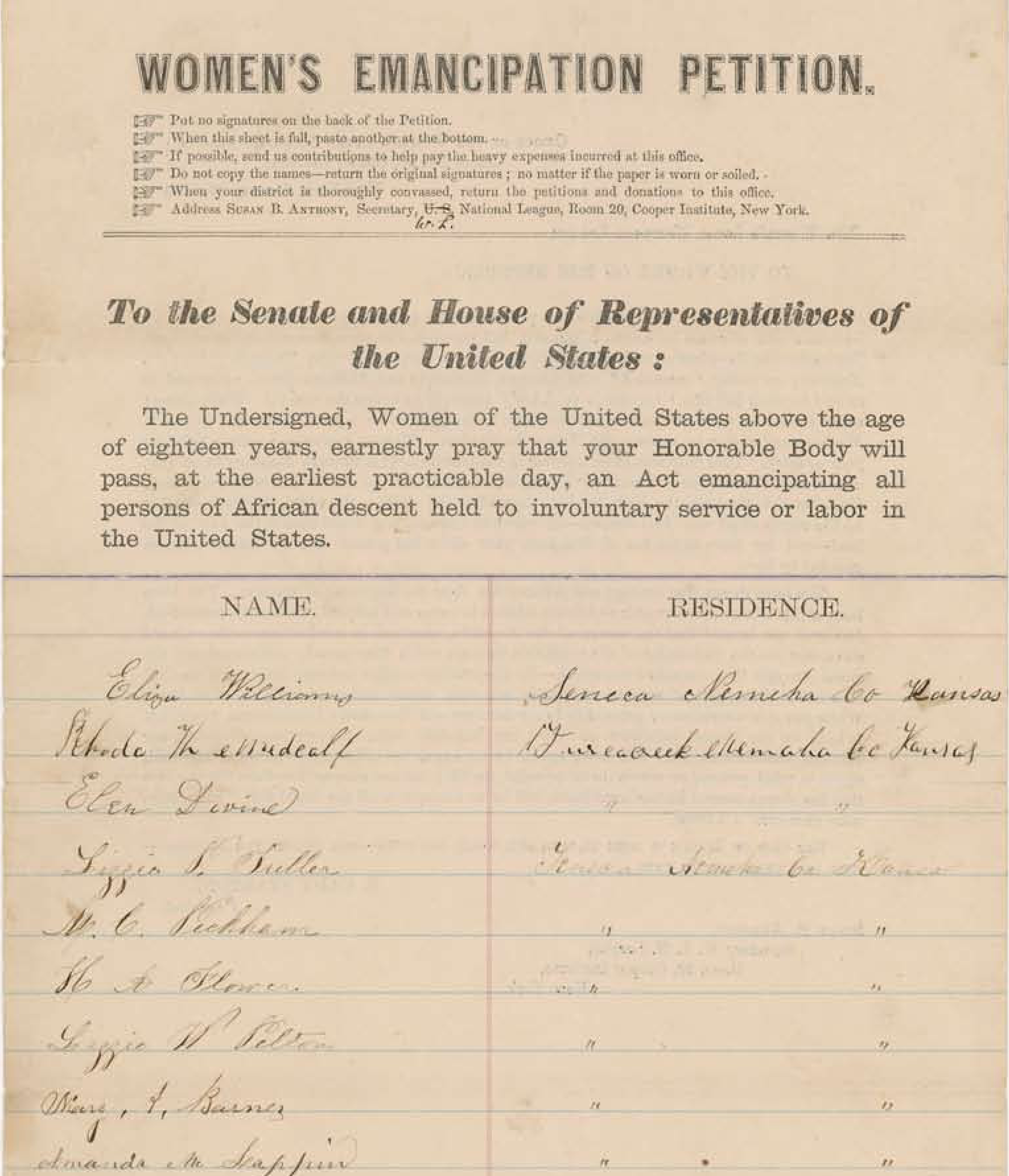
In 1863, Anthony moved into the Stantons' house in New York City, and the two women began organizing the Women's Loyal National League to campaign for an amendment to the U.S. Constitution that would abolish slavery. Stanton became president of the new organization, and Anthony served as secretary. It was the first national women's political organization in the United States. In the largest petition drive in the nation's history up to that time, the League collected nearly 400,000 signatures to abolish slavery, representing approximately one out of every twenty-four adults in the Northern states. This petition drive significantly assisted the passage of the Thirteenth Amendment, which ended slavery. The League disbanded in 1864 after it became clear that the amendment would be approved.
Although its primary purpose was the abolition of slavery, the League also explicitly advocated for political equality for women, approving a resolution at its founding convention that called for equal rights for all citizens regardless of race or sex. The League indirectly advanced the cause of women's rights in several ways. Stanton pointedly reminded the public that petitioning was the only political tool available to women at a time when only men were allowed to vote. The success of the League's petition drive demonstrated the value of formal organization to the women's movement, which had traditionally resisted being anything other than loosely organized up to that point. Its 5,000 members constituted a widespread network of women activists who gained experience that helped create a pool of talent for future forms of social activism, including suffrage. Stanton and Anthony emerged from this endeavor with significant national reputations.
5.2. American Equal Rights Association and the Suffrage Split
After the Civil War, Stanton and Anthony became alarmed at reports that the proposed Fourteenth Amendment to the U.S. Constitution, which would provide citizenship for African Americans, would also for the first time introduce the word "male" into the Constitution. Stanton famously declared, "if that word 'male' be inserted, it will take us a century at least to get it out."
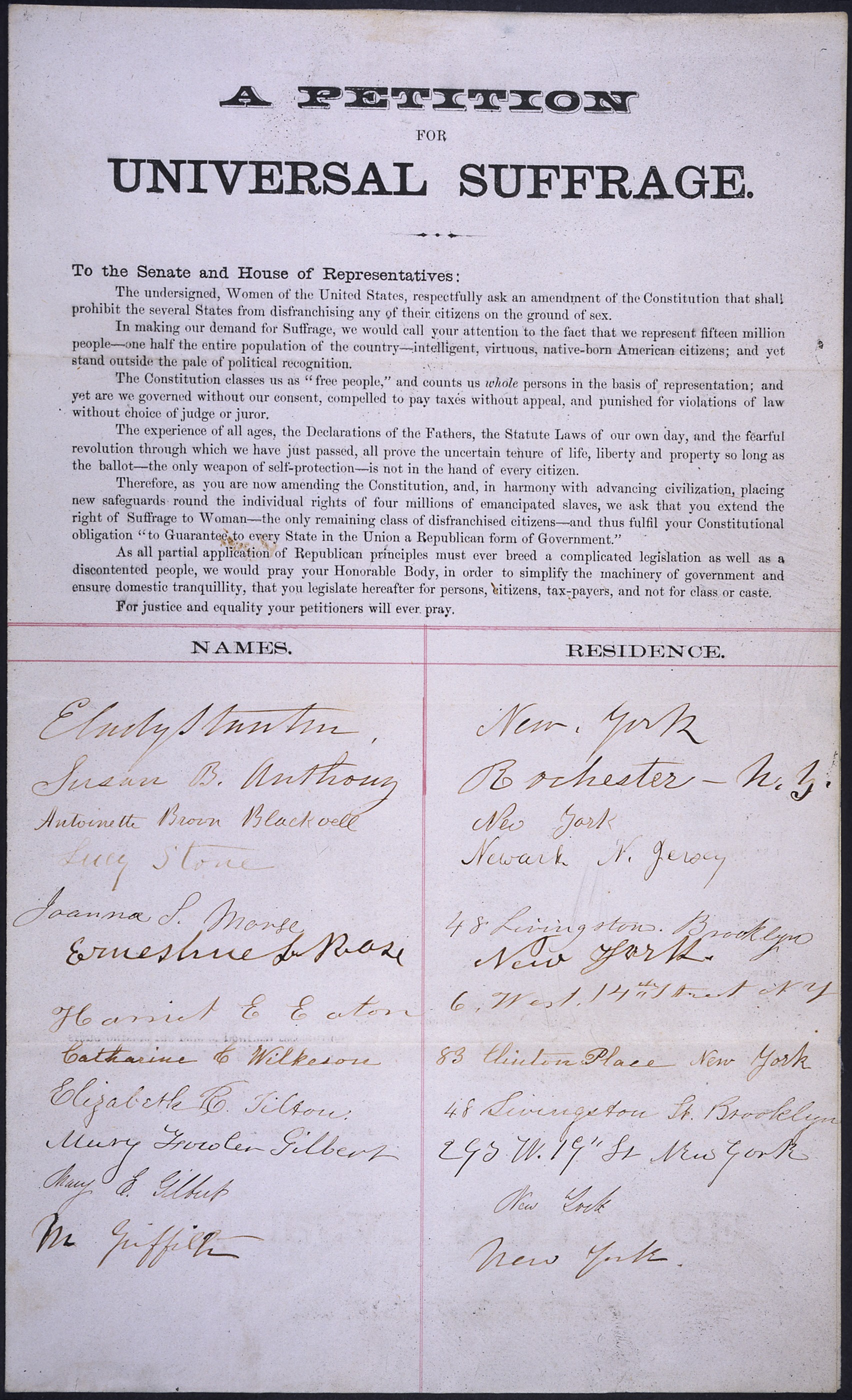
Organizing opposition to this development required preparation because the women's movement had become largely inactive during the Civil War. In January 1866, Stanton and Anthony sent out petitions calling for a constitutional amendment providing for women's suffrage, with Stanton's name at the top of the list of signatures. Stanton and Anthony organized the Eleventh National Women's Rights Convention in May 1866, the first since the Civil War began. The convention voted to transform itself into the American Equal Rights Association (AERA), whose purpose was to campaign for the equal rights of all citizens regardless of race or sex, especially the right of suffrage. Stanton was offered the post of president but declined in favor of Lucretia Mott. Other officers included Stanton as first vice president, Anthony as a corresponding secretary, Frederick Douglass as a vice president, and Lucy Stone as a member of the executive committee. Stanton provided hospitality for some of the attendees at this convention; Sojourner Truth, an abolitionist and women's rights activist who had formerly been enslaved, stayed at Stanton's house, as did Anthony.
Leading abolitionists opposed the AERA's drive for universal suffrage. Horace Greeley, a prominent newspaper editor, told Anthony and Stanton, "This is a critical period for the Republican Party and the life of our Nation... I conjure you to remember that this is 'the negro's hour.'" Abolitionist leaders Wendell Phillips and Theodore Tilton arranged a meeting with Stanton and Anthony, trying to convince them that the time had not yet come for women's suffrage, and that they should campaign for voting rights for black men only, not for all African Americans and all women. The two women rejected this guidance and continued to work for universal suffrage.
In 1866, Stanton declared herself a candidate for Congress, becoming the first woman to do so. She argued that although she could not vote, there was nothing in the Constitution to prevent her from running for Congress. Running as an independent against both the Democrat and Republican candidates, she received only 24 votes. Her campaign was noted by newspapers as far away as New Orleans.
In 1867, the AERA campaigned in Kansas for referendums that would enfranchise both African Americans and women. However, Wendell Phillips, who opposed mixing these two causes, blocked the funding that the AERA had expected for their campaign. By the end of summer, the AERA campaign had almost collapsed, and its finances were exhausted. Anthony and Stanton created a storm of controversy by accepting help during the last days of the campaign from George Francis Train, a wealthy businessman who supported women's rights. Train antagonized many activists by attacking the Republican Party and openly disparaging the integrity and intelligence of African Americans. There is reason to believe that Stanton and Anthony hoped to draw the volatile Train away from his cruder forms of racism, and that he had actually begun to do so. In any case, Stanton famously stated she would accept support from the devil himself if he supported women's suffrage.
After the ratification of the Fourteenth Amendment in 1868, a sharp dispute erupted within the AERA over the proposed Fifteenth Amendment to the U.S. Constitution, which would prohibit the denial of suffrage because of race. Stanton and Anthony opposed the amendment, which would have the effect of enfranchising black men, insisting that all women and all African Americans should be enfranchised at the same time. Stanton argued in the pages of The Revolution that by effectively enfranchising all men while excluding all women, the amendment would create an "aristocracy of sex," giving constitutional authority to the idea that men were superior to women.
Lucy Stone, who was emerging as a leader of those who were opposed to Stanton and Anthony, argued that suffrage for women would be more beneficial to the country than suffrage for black men but supported the amendment, saying, "I will be thankful in my soul if any body can get out of the terrible pit."
During the debate over the Fifteenth Amendment, Stanton wrote articles for The Revolution using language that was elitist and racially condescending. She believed that a long process of education would be needed before many of the former slaves and immigrant workers would be able to participate meaningfully as voters. Stanton wrote, "American women of wealth, education, virtue and refinement, if you do not wish the lower orders of Chinese, Africans, Germans and Irish, with their low ideas of womanhood to make laws for you and your daughters ... demand that women too shall be represented in government." In another article, Stanton objected to laws being made for women by "Patrick and Sambo and Hans and Yung Tung who do not know the difference between a Monarchy and a Republic." She also used the term "Sambo" on other occasions, drawing a rebuke from her old friend Frederick Douglass.
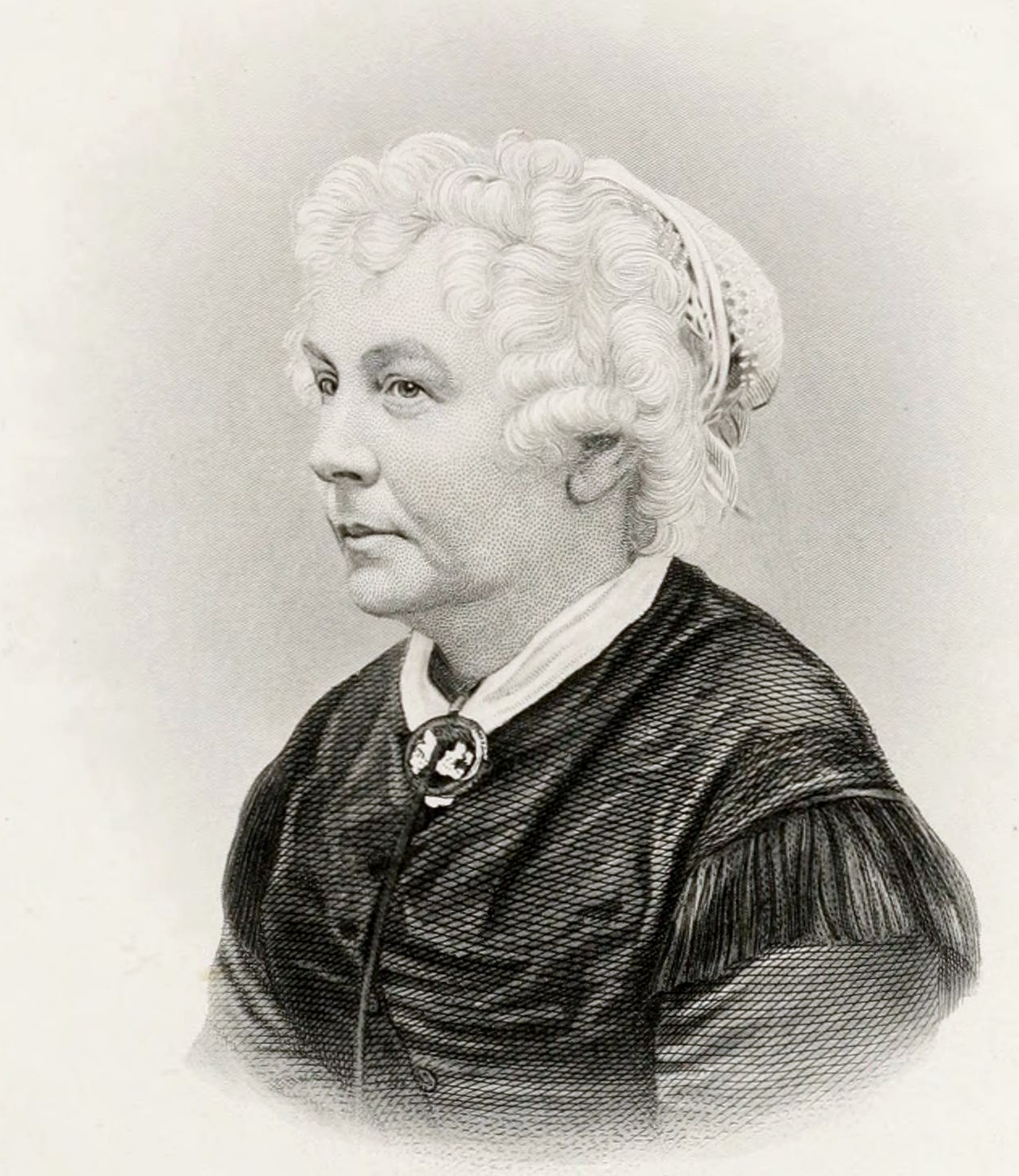
Douglass strongly supported women's suffrage but stated that suffrage for African Americans was a more urgent issue, literally a matter of life and death. He argued that white women already exerted a positive influence on government through the voting power of their husbands, fathers, and brothers, and that it "does not seem generous" for Anthony and Stanton to insist that black men should not achieve suffrage unless women achieved it at the same time. Sojourner Truth, on the other hand, supported Stanton's position, saying, "if colored men get their rights, and not colored women theirs, you see the colored men will be masters over the women, and it will be just as bad as it was before."
Early in 1869, Stanton called for a Sixteenth Amendment that would provide suffrage for women, stating, "The male element is a destructive force, stern, selfish, aggrandizing, loving war, violence, conquest, acquisition ... in the dethronement of woman we have let loose the elements of violence and ruin that she only has the power to curb."
The AERA increasingly divided into two wings, each advocating universal suffrage but with different approaches. One wing, led by Lucy Stone, was willing for black men to achieve suffrage first and wanted to maintain close ties with the Republican Party and the abolitionist movement. The other, led by Stanton and Anthony, insisted that all women and all African Americans should be enfranchised at the same time and worked toward a women's movement that would no longer be tied to the Republican Party or be financially dependent on abolitionists. The AERA effectively dissolved after an acrimonious meeting in May 1869, and two competing woman suffrage organizations were created in its aftermath. One consequence of the split for Stanton was that "Old friends became either enemies, like Lucy Stone, or wary associates, as in the case of Frederick Douglass."
5.3. The Revolution Newspaper
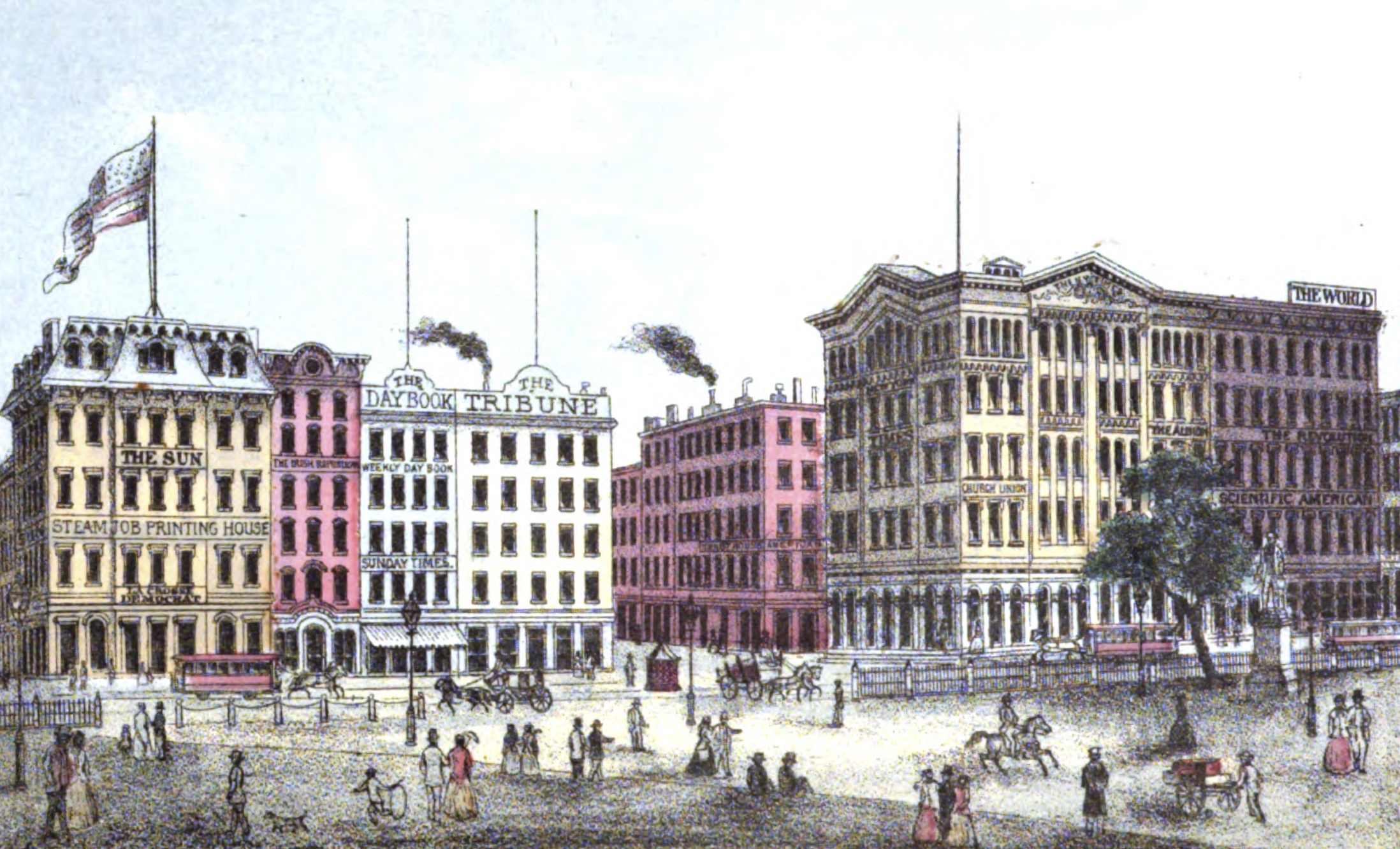
In 1868, Anthony and Stanton began publishing a sixteen-page weekly newspaper called The Revolution in New York City. Stanton was co-editor along with Parker Pillsbury, an experienced editor who was an abolitionist and a supporter of women's rights. Anthony, the owner, managed the business aspects of the paper. Initial funding was provided by George Francis Train, the controversial businessman who supported women's rights but alienated many activists with his political and racial views. The newspaper focused primarily on women's rights, especially suffrage for women, but it also covered topics such as politics, the labor movement, and finance. One of its stated goals was to provide a forum in which women could exchange opinions on key issues. Its motto was "Men, their rights and nothing more: women, their rights and nothing less."
Sisters Harriet Beecher Stowe and Isabella Beecher Hooker offered to provide funding for the newspaper if its name was changed to something less inflammatory, but Stanton declined their offer, strongly favoring its existing name. Their goal was to grow The Revolution into a daily paper with its own printing press, all owned and operated by women. However, the funding that Train had arranged for the newspaper was less than expected. Moreover, Train sailed for England after The Revolution published its first issue and was soon jailed for supporting Irish independence. Train's financial support eventually disappeared entirely. After twenty-nine months, mounting debts forced the transfer of the paper to a wealthy women's rights activist who gave it a less radical tone. Despite the relatively short time it was in their hands, The Revolution gave Stanton and Anthony a means for expressing their views during the developing split within the women's movement. It also helped them promote their wing of the movement, which eventually became a separate organization.
Stanton refused to take responsibility for the 10.00 K USD debt the newspaper had accumulated, stating she had children to support. Anthony, who had less money than Stanton, took responsibility for the debt, repaying it over a six-year period through paid speaking tours.
6. Leadership in the Suffrage Movement
Stanton's leadership in the national women's suffrage movement was characterized by her organizational roles, prolific writing, and influential public speaking, even as the movement's focus narrowed.
6.1. National Woman Suffrage Association (NWSA)
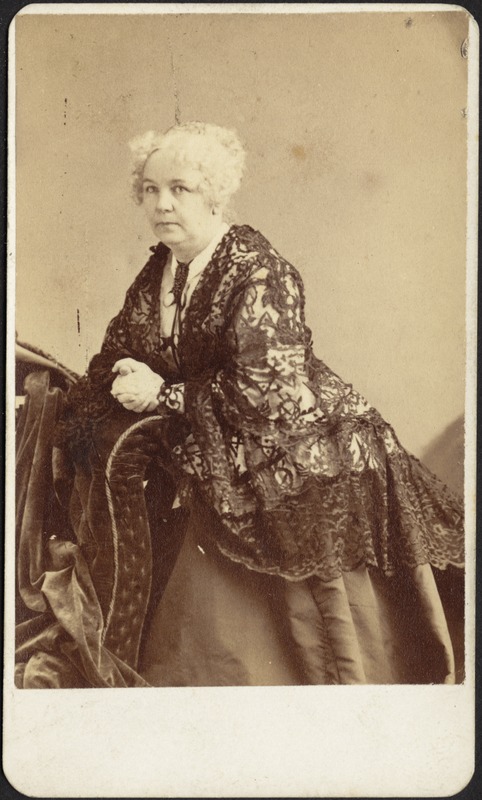
In May 1869, two days after the final AERA convention, Stanton, Anthony, and others formed the National Woman Suffrage Association (NWSA), with Stanton as president. Six months later, Lucy Stone, Julia Ward Howe, and others formed the rival American Woman Suffrage Association (AWSA), which was larger and better funded. The immediate cause for the split in the women's suffrage movement was the proposed Fifteenth Amendment, but the two organizations had other differences as well. The NWSA was politically independent, while the AWSA aimed for close ties with the Republican Party, hoping that ratification of the Fifteenth Amendment would lead to Republican support for women's suffrage. The NWSA focused primarily on winning suffrage at the national level, while the AWSA pursued a state-by-state strategy. The NWSA initially worked on a wider range of women's issues than the AWSA, including divorce reform and equal pay for women.
As the new organization was being formed, Stanton proposed limiting its membership to women, but her proposal was not accepted. In practice, however, the overwhelming majority of its members and officers were women. Stanton disliked many aspects of organizational work because it interfered with her ability to study, think, and write. She begged Anthony, without success, to arrange the NWSA's first convention so that she herself would not need to attend. For the rest of her life, Stanton attended conventions only reluctantly if at all, wanting to maintain the freedom to express her opinions without worrying about who in the organization might be offended. Of the fifteen NWSA meetings between 1870 and 1879, Stanton presided at four and was present at only one other, leaving Anthony effectively in charge of the organization.
In 1869, Francis and Virginia Minor, husband and wife suffragists from Missouri, developed a strategy based on the idea that the U.S. Constitution implicitly enfranchised women. It relied heavily on the Fourteenth Amendment, which states, "No State shall make or enforce any law which shall abridge the privileges or immunities of citizens of the United States ... nor deny to any person within its jurisdiction the equal protection of the laws." In 1871, the NWSA officially adopted what had become known as the New Departure strategy, encouraging women to attempt to vote and to file lawsuits if denied that right. Soon hundreds of women tried to vote in dozens of localities. Susan B. Anthony actually succeeded in voting in 1872, for which she was arrested and found guilty in a widely publicized trial. In 1880, Stanton also tried to vote. When the election officials refused to let her place her ballot in the box, she threw it at them. When the Supreme Court ruled in 1875 in Minor v. Happersett that "the Constitution of the United States does not confer the right of suffrage upon anyone," the NWSA decided to pursue the far more difficult strategy of campaigning for a constitutional amendment that would guarantee voting rights for women.
In 1878, Stanton and Anthony convinced Senator Aaron A. Sargent to introduce into Congress a women's suffrage amendment that, more than forty years later, would be ratified as the Nineteenth Amendment to the United States Constitution. Its text is identical to that of the Fifteenth Amendment except that it prohibits the denial of suffrage because of sex rather than "race, color, or previous condition of servitude."
Stanton traveled with her daughter Harriet to Europe in May 1882 and did not return for a year and a half. Already a public figure of some prominence in Europe, she gave several speeches there and wrote reports for American newspapers. She visited her son Theodore in France, where she met her first grandchild, and traveled to England for Harriet's marriage to an Englishman. After Anthony joined her in England in March 1883, they traveled together to meet with leaders of European women's movements, laying the groundwork for an international women's organization. Stanton and Anthony returned to the U.S. together in November 1883. Hosted by the NWSA, delegates from fifty-three women's organizations in nine countries met in Washington in 1888 to form the organization that Stanton and Anthony had been working toward, the International Council of Women (ICW), which is still active.
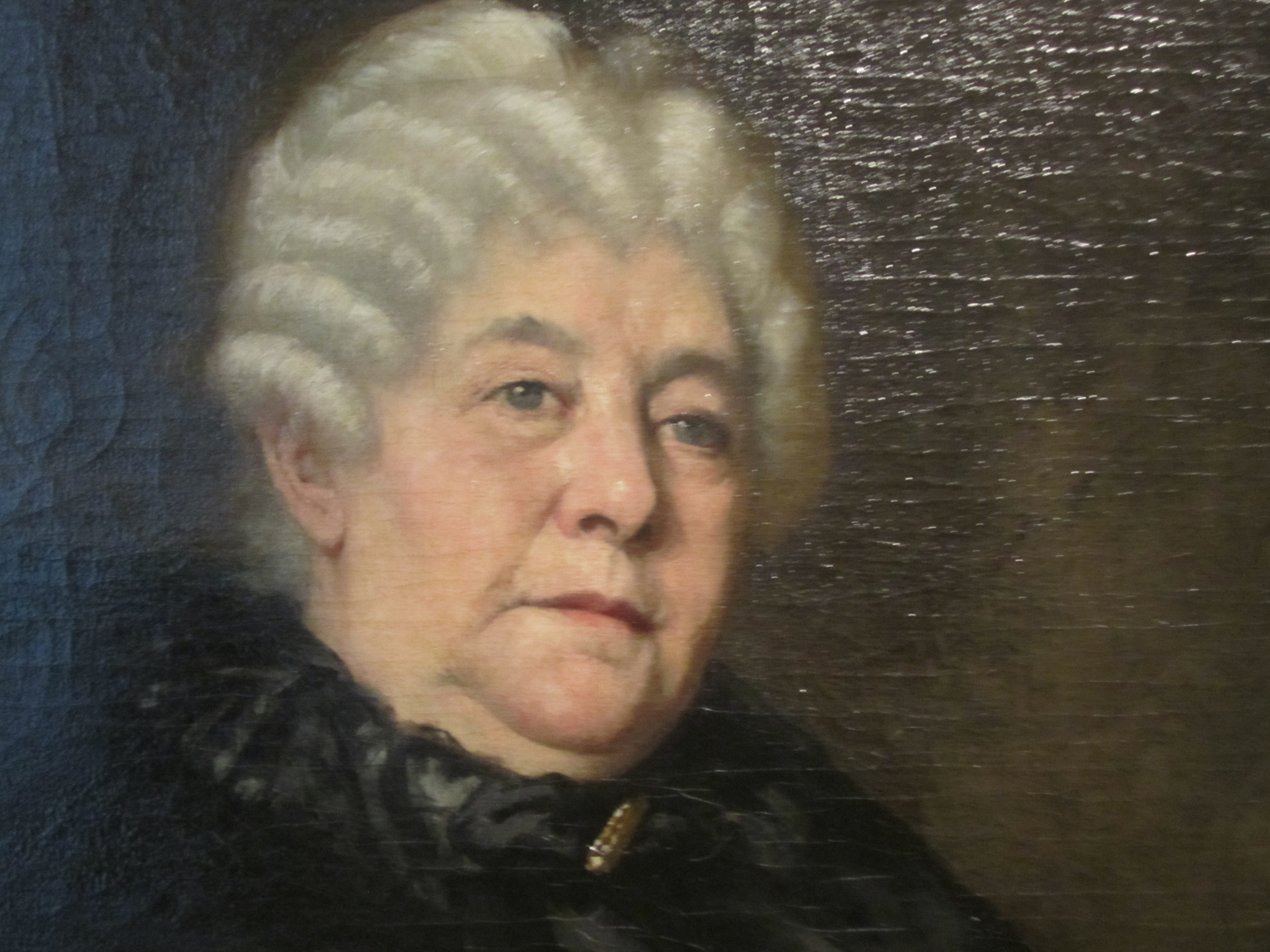
Stanton traveled again to Europe in October 1886, visiting her children in France and England. She returned to the U.S. in March 1888 barely in time to deliver a major speech at the founding meeting of the ICW. When Anthony discovered that Stanton had not yet written her speech, she insisted that Stanton stay in her hotel room until she had written it, and she placed a younger colleague outside her door to make sure she did so. Stanton later teased Anthony, saying, "Well, as all women are supposed to be under the thumb of some man, I prefer a tyrant of my own sex, so I shall not deny the patent fact of my subjection." The convention succeeded in bringing increased publicity and respectability to the women's movement, especially when President Grover Cleveland honored the delegates by inviting them to a reception at the White House.
Despite her record of racially insensitive remarks and occasional appeals to the racial prejudices of white people, Stanton applauded the marriage in 1884 of her friend Frederick Douglass to Helen Pitts, a white woman, a marriage that enraged racists. Stanton wrote Douglass a warm letter of congratulation, to which Douglass responded that he had been sure that she would be happy for him. When Anthony realized that Stanton was planning to publish her letter, she convinced her not to do so, wanting to avoid associating women's suffrage with an unrelated and divisive issue.
6.2. Lecture Circuit
Stanton worked as a lecturer for the New York bureau of the Redpath Lyceum from late 1869 until 1879. This organization was part of the Lyceum movement, which arranged for speakers and entertainers to tour the country, often visiting small communities where educational opportunities and theaters were scarce. For ten years, Stanton traveled eight months of the year on the lecture circuit, usually delivering one lecture per day, two on Sundays. She also arranged smaller meetings with local women who were interested in women's rights. Traveling was sometimes difficult. One year, when deep snow closed the railroads, Stanton hired a sleigh and continued, bundled in furs to protect against freezing weather. During 1871, she and Anthony traveled together for three months through several western states, eventually arriving in California.
Her most popular lecture, "Our Girls," urged young women to be independent and to seek self-fulfillment. In "The Antagonism of Sex," she addressed the question of women's rights with a special fervor. Other popular lectures included "Our Boys," "Co-education," "Marriage and Divorce," and "The Subjugation of Women." On Sundays, she would often speak on "Famous Women in the Bible" and "The Bible and Women's Rights." Her earnings were impressive. During her first three months on the road, Stanton reported, she cleared "2.00 K USD above all expenses ... besides stirring women generally up to rebellion." Because her husband's income had always been erratic and he had invested it badly, the money she earned was welcome, especially with most of their children either in college or soon to begin.
6.3. History of Woman Suffrage
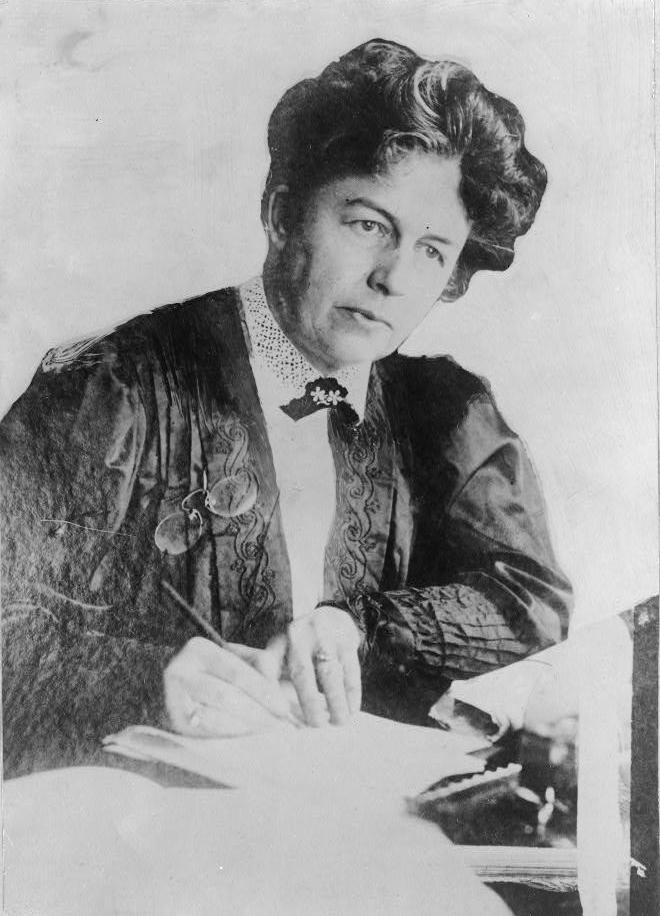
In 1876, Anthony moved into Stanton's house in New Jersey to begin working with Stanton on the History of Woman Suffrage. She brought with her several trunks and boxes of letters, newspaper clippings, and other documents. Originally envisioned as a modest publication that could be produced quickly, the history evolved into a six-volume work of more than 5,700 pages written over a period of 41 years.
The first three volumes, which cover the movement up to 1885, were produced by Stanton, Anthony, and Matilda Joslyn Gage. Anthony handled the production details and the correspondence with contributors. Stanton wrote most of the first three volumes, with Gage writing three chapters of the first volume and Stanton writing the rest. Gage was forced to abandon the project afterward due to her husband's illness. After Stanton's death, Anthony published Volume 4 with the help of Ida Husted Harper. After Anthony's death, Harper completed the last two volumes, which brought the history up to 1920.
Stanton and Anthony encouraged their rival Lucy Stone to assist with the work, or at least to send material that could be used by someone else to write the history of her wing of the movement, but she refused to cooperate in any way. Stanton's daughter Harriot Stanton Blatch, who had returned from Europe to assist with the editing, insisted that the history would not be taken seriously if Stone and the AWSA were not included. She herself wrote a 120-page chapter on Stone and the AWSA, which appears in Volume 2.
The History of Woman Suffrage preserves an enormous amount of material that might have been lost forever. However, written by leaders of one wing of the divided women's movement, it does not give a balanced view of events concerning their rivals. It overstates the role of Stanton and Anthony and understates or ignores the roles of Stone and other activists who did not fit into the historical narrative they had developed. Because it was for years the main source of documentation about the suffrage movement, historians have had to uncover other sources to provide a more balanced view.
6.4. National American Woman Suffrage Association (NAWSA)
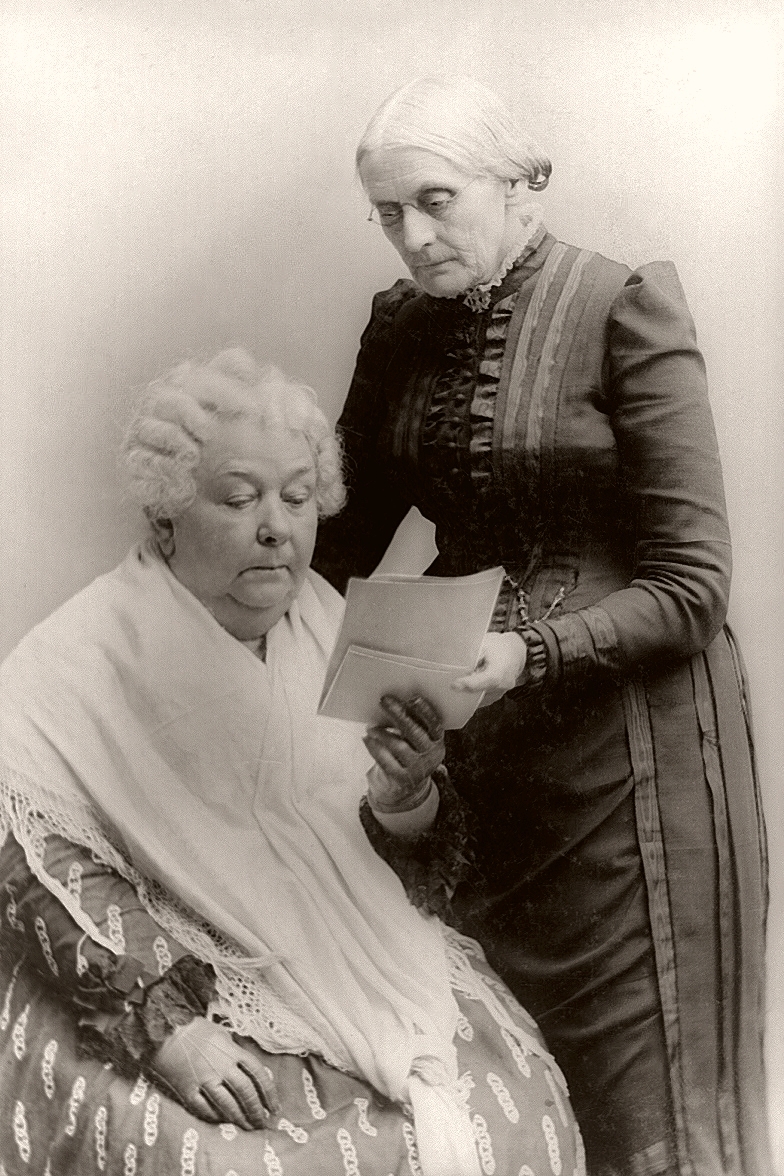
The Fifteenth Amendment was ratified in 1870, removing much of the original reason for the split in the women's suffrage movement. As early as 1875, Anthony began urging the NWSA to focus more tightly on women's suffrage instead of a variety of women's issues, which brought it closer to the AWSA's approach. The rivalry between the two organizations remained bitter, however, as the AWSA began to decline in strength during the 1880s.
In the late 1880s, Alice Stone Blackwell, daughter of AWSA leader Lucy Stone, began working to heal the breach among the older generation of leaders. Anthony cautiously cooperated with this effort, but Stanton did not, disappointed that both organizations wanted to focus almost exclusively on suffrage. She wrote to a friend: "Lucy & Susan alike see suffrage only. They do not see women's religious & social bondage, neither do the young women in either association, hence they may as well combine."
In 1890, the two organizations merged as the National American Woman Suffrage Association (NAWSA). At Anthony's insistence, Stanton accepted its presidency despite her unease at the direction of the new organization. In her speech at the founding convention, she urged it to work on a broad range of women's issues and called for it to include all races, creeds, and classes, including "Mormon, Indian and black women." The day after she was elected president, Stanton sailed to her daughter's home in England, where she stayed for eighteen months, leaving Anthony effectively in charge. When Stanton declined reelection to the presidency at the 1892 convention, Anthony was elected to that post.
6.5. "The Solitude of Self" Speech
In 1892, Stanton delivered the speech that became known as The Solitude of Self three different times in as many days: twice to Congressional committees and once as her final address to the NAWSA. She considered it her best speech, and many others agreed. Lucy Stone printed it in its entirety in the Woman's Journal in the space where her own speech normally would have appeared. In pursuit of her lifelong quest to overturn the belief that women were lesser beings than men and therefore not suited for independence, Stanton argued in this speech that women must develop themselves, acquiring an education and nourishing an inner strength, a belief in themselves. Self-sovereignty was the essential element in a woman's life, not her role as daughter, wife, or mother. Stanton stated, "no matter how much women prefer to lean, to be protected and supported, nor how much men desire to have them do so, they must make the voyage of life alone."
7. Religious Views and The Woman's Bible
Stanton's critical perspective on religion evolved from childhood fears to a mature rejection of patriarchal interpretations of sacred texts, culminating in her controversial work, The Woman's Bible.
7.1. Critique of Religious Patriarchy
Stanton recalled being terrified as a child by a minister's talk of damnation, but after overcoming those fears with the help of her father and brother-in-law, she rejected that type of religion entirely. As an adult, her religious views continued to evolve. While living in Boston in the 1840s, she was attracted to the preaching of Theodore Parker, a transcendentalist and prominent Unitarian minister. Parker, like her cousin Gerrit Smith, was a member of the Secret Six, a group that financed John Brown's raid on Harpers Ferry in an effort to spark an armed slave rebellion. Parker taught that the Bible need not be taken literally, that God need not be envisioned as male, and that individual men and women had the ability to determine religious truth for themselves.
In the Declaration of Sentiments written for the 1848 Seneca Falls Convention, Stanton listed a series of grievances against males who, among other things, excluded women from the ministry and other leading roles in religion. In one of those grievances, Stanton stated that man "has usurped the prerogative of Jehovah himself, claiming it as his right to assign for her a sphere of action, when that belongs to her conscience and her God." This was the only grievance that was not a matter of fact (such as exclusion of women from colleges or the right to vote), but one of belief, challenging a fundamental basis of authority and autonomy.
The years after the Civil War saw a significant increase in the variety of women's social reform organizations and the number of activists in them. Stanton was uneasy about the belief held by many of these activists that government should enforce Christian ethics through actions such as teaching the Bible in public schools and strengthening Sunday closing laws. In her speech at the 1890 unity convention that established the NAWSA, Stanton stated, "I hope this convention will declare that the Woman Suffrage Association is opposed to all Union of Church and State and pledges itself ... to maintain the secular nature of our government."
7.2. The Woman's Bible and its Reception
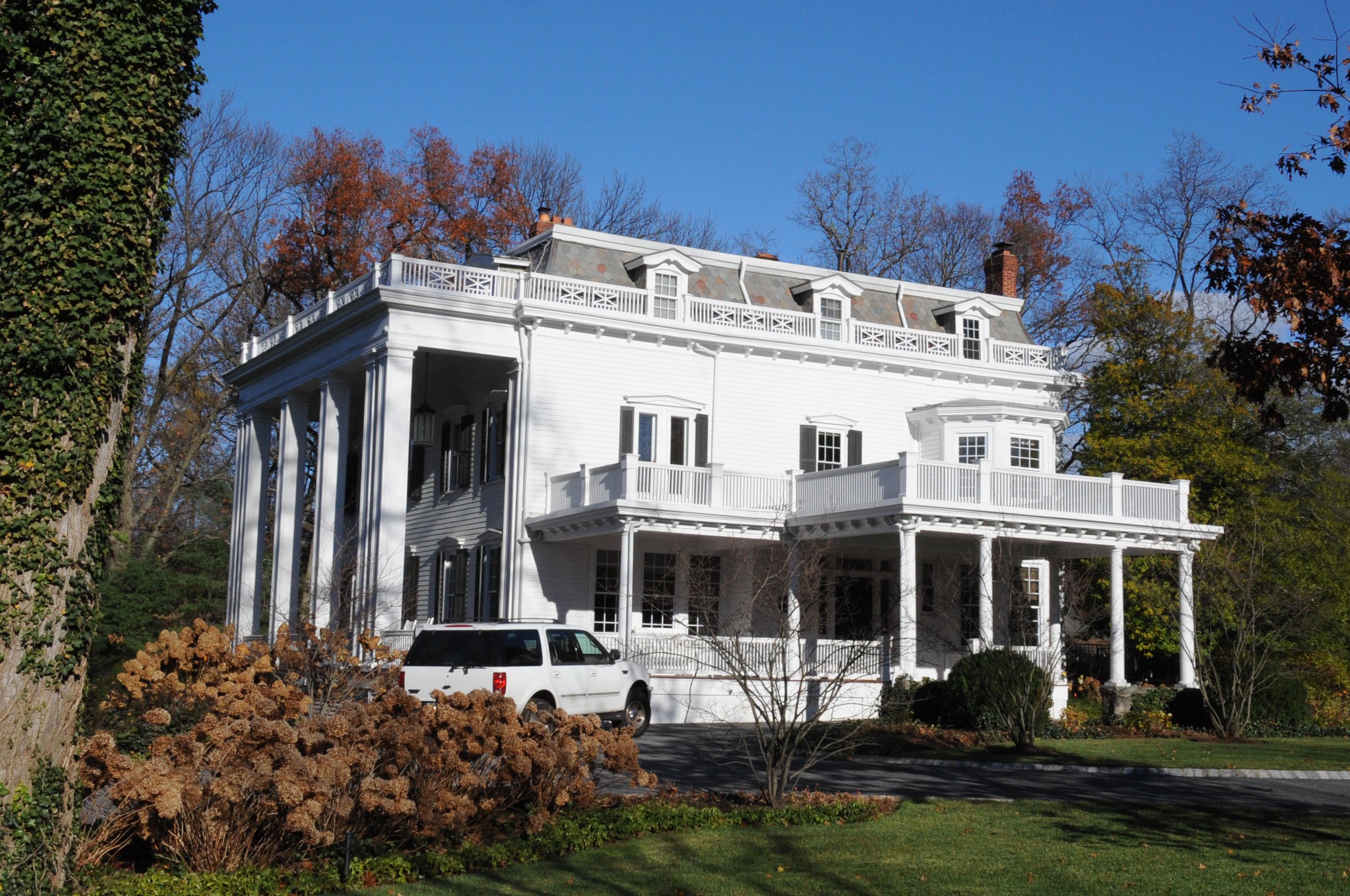
In 1895, Stanton published The Woman's Bible, a provocative examination of the Bible that questioned its status as the word of God and attacked the way it was being used to relegate women to an inferior status. Stanton wrote most of it, with the assistance of several other women, including Matilda Joslyn Gage, who had assisted with the History of Woman Suffrage. In it, Stanton methodically worked her way through the Bible, quoting selected passages and commenting on them, often sarcastically. A best-seller, with seven printings in six months, it was translated into several languages. A second volume was published in 1898.
The book created a storm of controversy that affected the entire women's rights movement. Stanton could not have been surprised, having earlier told an acquaintance, "Well, if we who do see the absurdities of the old superstitions never unveil them to others, how is the world to make any progress in the theologies? I am in the sunset of life, and I feel it to be my special mission to tell people what they are not prepared to hear."
The process of critically examining the text of the Bible, known as historical criticism, was already an established practice in scholarly circles. What Stanton did that was new was to scrutinize the Bible from a woman's point of view, basing her findings on the proposition that much of its text reflected not the word of God but prejudice against women during a less civilized age. In her book, Stanton explicitly denied much of what was central to traditional Christianity, stating, "I do not believe that any man ever saw or talked with God, I do not believe that God inspired the Mosaic code, or told the historians what they say he did about woman, for all the religions on the face of the earth degrade her, and so long as woman accepts the position that they assign her, her emancipation is impossible." In the book's closing words, Stanton expressed the hope for reconstructing "a more rational religion for the nineteenth century, and thus escape all the perplexities of the Jewish mythology as of no more importance than those of the Greek, Persian, and Egyptian."
At the 1896 NAWSA convention, Rachel Foster Avery, a rising young leader, harshly attacked The Woman's Bible, calling it a "volume with a pretentious title ... without either scholarship or literary merit." Avery introduced a resolution to distance the organization from Stanton's book. Despite Anthony's strong objection that such a move was unnecessary and hurtful, the resolution passed by a vote of 53 to 41. Stanton told Anthony that she should resign from her leadership post in protest, but Anthony refused. Stanton afterward grew increasingly alienated from the suffrage movement. The incident led many of the younger suffrage leaders to hold Stanton in low regard for the rest of her life.
8. Later Life and Thought
In her later years, Stanton continued her advocacy, refining her political philosophy and reflecting on her life's work, even as some of her positions sparked new controversies.
8.1. Advocacy for "Educated Suffrage"
When Stanton returned from her final trip to Europe in 1891, she moved in with two of her unmarried children who shared a home in New York City. She increased her advocacy of "educated suffrage," a concept she had long promoted. In 1894, she debated William Lloyd Garrison Jr. on this issue in the pages of Woman's Journal. Her daughter Harriot Stanton Blatch, who was then active in the women's suffrage movement in Britain and would later be a leading figure in the U.S. movement, was disturbed by the views that Stanton expressed during this debate. She published a critique of her mother's views, arguing that many people who had not enjoyed the opportunity to acquire an education were nonetheless intelligent and accomplished citizens who deserved the right to vote. In a letter to the 1902 NAWSA convention, Stanton continued her campaign, calling for "a constitutional amendment requiring an educational qualification" and stating that "everyone who votes should read and write the English language intelligently."
Stanton's position on "educated suffrage" was rooted in her belief that "an aristocracy of men, composed of all types, shades and degrees of intelligence and ignorance, is not the most desirable substratum for government. To subject intelligent, highly educated, virtuous, honorable women to the behests of such an aristocracy is the height of cruelty and injustice."
8.2. Political Radicalism and Memoirs
In her later years, Stanton became interested in efforts to create cooperative communities and workplaces. She was also attracted to various forms of political radicalism, applauding the Populist movement and identifying herself with socialism, especially Fabianism, a gradualist form of democratic socialism. Political radicalism was one of four strands of Stanton's political thinking, which were "far from consistent" with each other.
In 1898, Stanton published her memoirs, Eighty Years and More, in which she presented the image of herself by which she wished to be remembered. In it, she minimized political and personal conflicts and omitted any discussion of the split in the women's movement. Largely dealing with political topics, the memoir barely mentions her mother, husband, or children. Despite some degree of friction between Stanton and Anthony in their later years, on the dedication page Stanton stated, "I dedicate this volume to Susan B. Anthony, my steadfast friend for half a century." Stanton continued to write articles prolifically for a variety of publications right up until she died.
9. Death and Legacy
Elizabeth Cady Stanton's death marked the end of a tireless career, but her influence continued to resonate, leading to posthumous recognition and re-evaluation of her profound contributions to women's rights and social reform.
9.1. Death and Burial
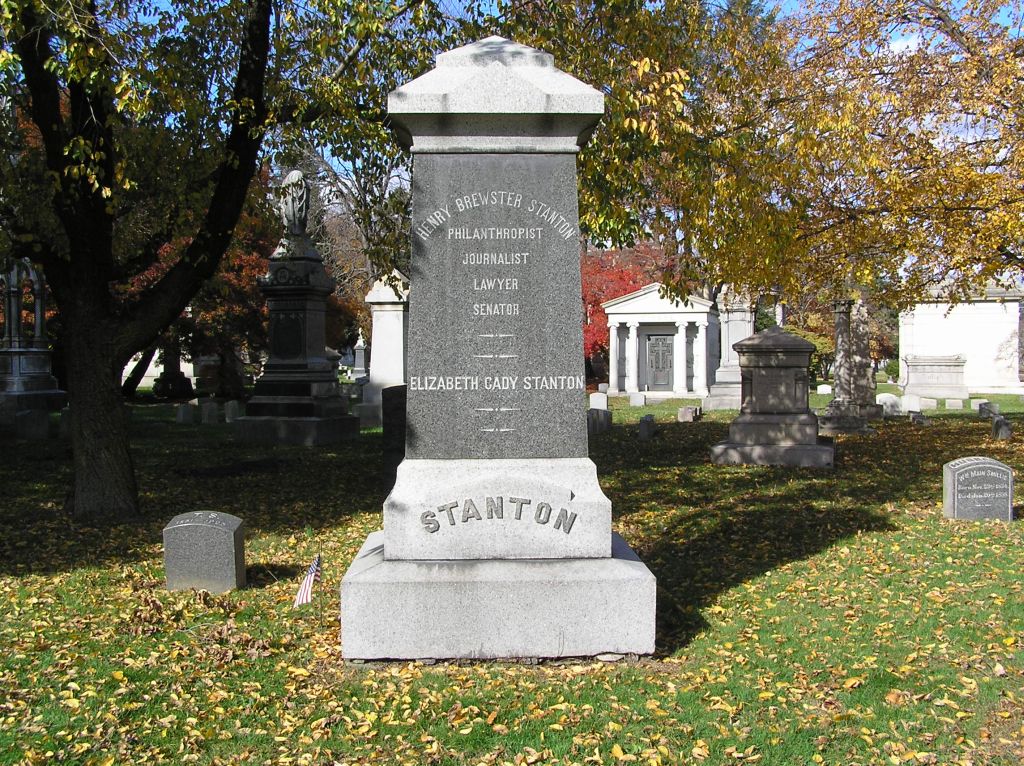
Stanton died in New York City on October 26, 1902, 18 years before women achieved the right to vote in the United States via the Nineteenth Amendment to the U.S. Constitution. The medical report stated the cause of death was heart failure. According to her daughter Harriet, she had developed breathing problems that had begun to interfere with her work. The day before she died, Stanton told her doctor, a woman, to give her something to speed her death if the problem could not be cured.
Stanton had signed a document two years earlier directing that her brain was to be donated to Cornell University for scientific study after her death, but her wishes in that regard were not carried out. She was interred beside her husband in Woodlawn Cemetery in The Bronx, New York City. After Stanton's death, Susan B. Anthony wrote to a friend: "Oh, this awful hush! It seems impossible that voice is stilled which I have loved to hear for fifty years. Always I have felt I must have Mrs. Stanton's opinion of things before I knew where I stood myself. I am all at sea."
9.2. Posthumous Evaluation and Recognition
Even after her death, foes of women's suffrage continued to use Stanton's more unorthodox statements to promote opposition to ratification of the Nineteenth Amendment, which became law in 1920. Younger women in the suffrage movement responded by belittling Stanton and glorifying Anthony. In 1923, Alice Paul, leader of the National Women's Party, introduced the proposed Equal Rights Amendment in Seneca Falls on the 75th anniversary of the Seneca Falls Convention. The planned ceremony and printed program made no mention of Stanton, the primary force behind the convention. One of the speakers was Stanton's daughter, Harriot Stanton Blatch, who insisted on paying tribute to her mother's role. Aside from a collection of her letters published by her children, no significant book about Stanton was written until a full-length biography was published in 1940 with the assistance of her daughter. Stanton began to regain recognition for her role in the women's rights movement with the rise of the new feminist movement in the 1960s and the establishment of academic women's history programs.
9.3. Commemorations and Honors
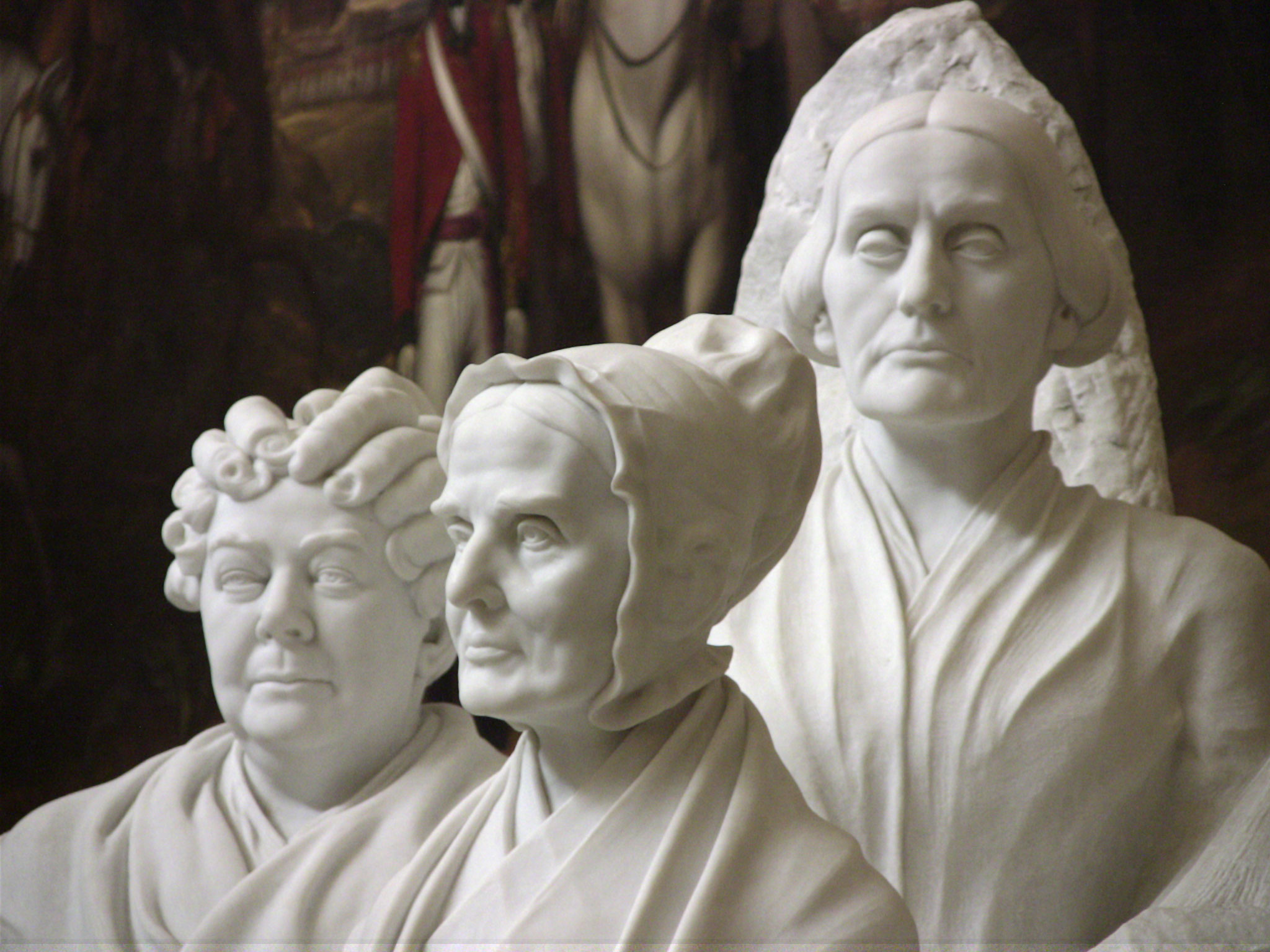
Stanton is commemorated, along with Lucretia Mott and Susan B. Anthony, in the 1921 sculpture Portrait Monument by Adelaide Johnson in the United States Capitol. Placed for years in the crypt of the capitol building, it was moved in 1997 to a more prominent location in the U.S. Capitol rotunda.
In 1965, the Elizabeth Cady Stanton House in Seneca Falls was declared a National Historic Landmark. It is now part of the Women's Rights National Historical Park. In 1969, the group New York Radical Feminists was founded. It was organized into small cells or "brigades" named after notable feminists of the past; Anne Koedt and Shulamith Firestone led the Stanton-Anthony Brigade. In 1973, Stanton was inducted into the National Women's Hall of Fame. In 1975, the Elizabeth Cady Stanton House in Tenafly, New Jersey, was declared a National Historic Landmark.
In 1982, the Elizabeth Cady Stanton and Susan B. Anthony Papers project began work as an academic undertaking to collect and document all available materials written by Elizabeth Cady Stanton and Susan B. Anthony. The six-volume "The Selected Papers of Elizabeth Cady Stanton and Susan B. Anthony" was published from the 14,000 documents collected by the project. The project has since ended.
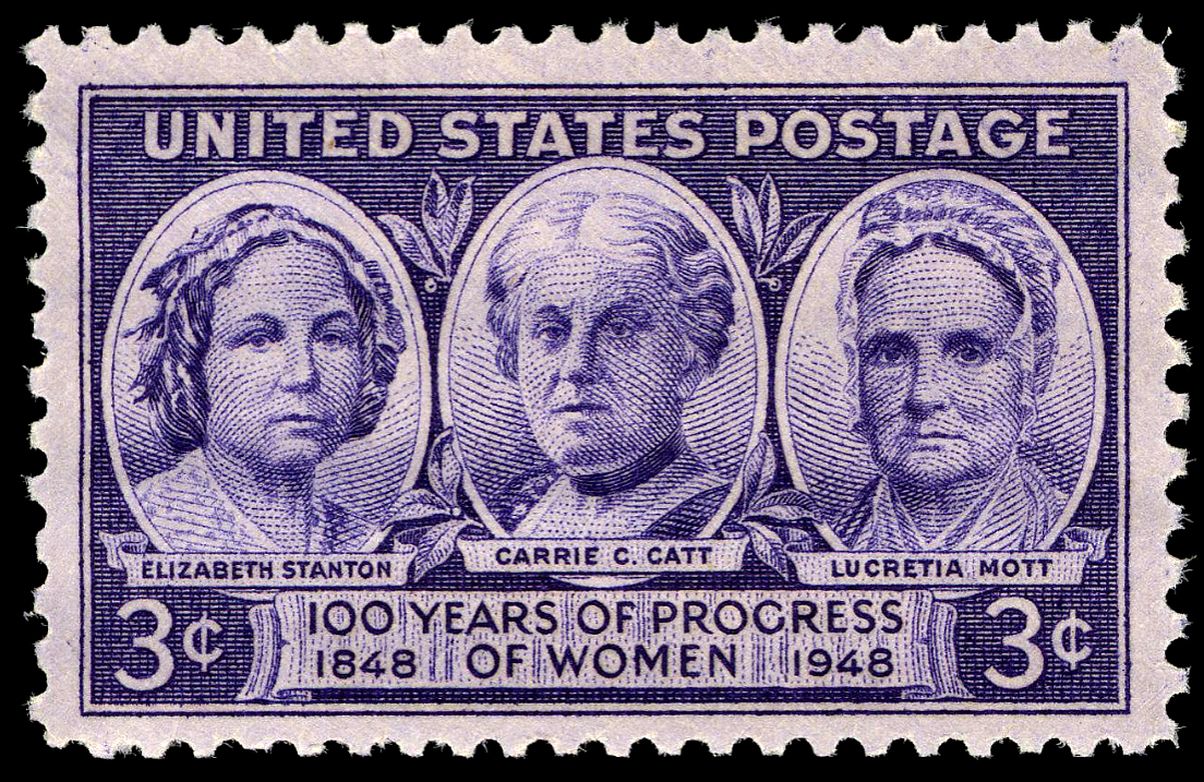
In 1999, Ken Burns and Paul Barnes produced the documentary Not for Ourselves Alone: The Story of Elizabeth Cady Stanton & Susan B. Anthony, which won a Peabody Award. This documentary helped reignite interest in Stanton, focusing on her central role in American women's suffrage, legal reform, and the broader social role of women.
In 1999, a sculpture by Ted Aub was unveiled to commemorate the introduction of Stanton to Susan B. Anthony by Amelia Bloomer on May 12, 1851. This sculpture, called "When Anthony Met Stanton," consists of the three women depicted as life-size bronze statues. It overlooks Van Cleef Lake in Seneca Falls, New York, where the introduction occurred.
The Elizabeth Cady Stanton Pregnant and Parenting Student Services Act was introduced into Congress in 2005 to fund services for students who were pregnant or already were parents. It did not become law. In 2008, 37 Park Row, the site of the office of Stanton and Anthony's newspaper, The Revolution, was included in the map of Manhattan historical sites related to women's history that was created by the Office of the Manhattan Borough President.
Stanton is commemorated, together with Amelia Bloomer, Sojourner Truth, and Harriet Tubman, in the calendar of saints of the Episcopal Church on July 20 of each year. The U.S. Treasury Department announced in 2016 that an image of Stanton would appear on the back of a newly designed $10 bill along with Lucretia Mott, Sojourner Truth, Susan B. Anthony, Alice Paul, and the 1913 Woman Suffrage Procession. New $5, $10, and $20 bills were planned to be introduced in 2020 in conjunction with the 100th anniversary of American women winning the right to vote, but were delayed.
In 2020, the Women's Rights Pioneers Monument was unveiled in Central Park in New York City on the 100th anniversary of the passage of the Nineteenth Amendment giving women the right to vote. Created by Meredith Bergmann, this sculpture depicts Stanton, Susan B. Anthony, and Sojourner Truth engaged in animated discussion.
10. Criticisms and Controversies
Elizabeth Cady Stanton's legacy is marked by significant criticisms and controversies, particularly concerning her racial remarks, elitist language, and the divisions she caused within the women's movement.
After the Civil War, Stanton and Anthony's strong opposition to the Fourteenth and Fifteenth Amendments, which granted suffrage to African American men while excluding all women, led to a major split within the women's rights movement. During this bitter debate, Stanton sometimes expressed her ideas in elitist and racially condescending language. She argued that "American women of wealth, education, virtue and refinement" should be enfranchised before "the lower orders of Chinese, Africans, Germans and Irish, with their low ideas of womanhood." She also objected to laws being made for women by "Patrick and Sambo and Hans and Yung Tung who do not know the difference between a Monarchy and a Republic," using the derogatory term "Sambo" on multiple occasions. These remarks drew a rebuke from her old friend Frederick Douglass, who, while supporting women's suffrage, argued that suffrage for African Americans was a more urgent, life-or-death issue.
Stanton's position on prioritizing the suffrage of "educated" and "refined" women over that of newly freed Black men and immigrants fragmented the civil rights movement and contributed to the passage of literacy requirements for voting in some areas. While some scholars argue that her stance aimed to achieve universal suffrage for both Black and white individuals, her rhetoric often alienated Black activists and more inclusive reformers.
The publication of her book The Woman's Bible in 1895 and 1898 also generated widespread controversy. In this work, Stanton critically examined biblical texts from a woman's perspective, arguing that much of the Bible reflected not the word of God but prejudice against women from a less civilized age. She explicitly denied core tenets of traditional Christianity, stating, "I do not believe that any man ever saw or talked with God, I do not believe that God inspired the Mosaic code... for all the religions on the face of the earth degrade her, and so long as woman accepts the position that they assign her, her emancipation is impossible." This critical stance on religion alienated many traditional and religiously inclined suffragists, leading the National American Woman Suffrage Association (NAWSA) to formally distance itself from the book in 1896, despite Susan B. Anthony's objections. This incident further isolated Stanton from the mainstream suffrage movement and led many younger leaders to hold her in low regard.
The Indonesian source specifically notes that Stanton's struggle for liberation was primarily limited to white women, and that the liberation of Black women did not receive her attention. This highlights a key criticism regarding the scope of her feminist vision and her controversial racial remarks during the suffrage debates.
11. Impact and Philosophy
Elizabeth Cady Stanton's impact on the women's rights movement and social reform was profound, driven by a core philosophy centered on equality, individual liberty, and secularism. She was a leading figure who broadened the scope of the women's movement beyond just the right to vote, advocating for comprehensive changes in legal, social, and religious spheres.
Stanton's intellectual contributions were foundational. Her authorship of the Declaration of Sentiments for the 1848 Seneca Falls Convention laid out a comprehensive list of grievances and demands for women's equality, serving as a blueprint for the early women's rights movement. Her insistence on including women's suffrage in the Declaration, despite initial opposition, proved prescient and made the vote a central goal.
Her lifelong partnership with Susan B. Anthony was instrumental in advancing the cause. While Anthony was the organizational force, Stanton provided the intellectual framework, writing speeches, articles, and books that articulated the movement's philosophy and goals. Their collaboration, though sometimes strained by differing approaches, effectively propelled the movement forward for decades.
Stanton's advocacy extended to numerous social reforms. She championed married women's property rights, recognizing that economic independence was crucial for women's autonomy. Her progressive stance on divorce reform challenged traditional, patriarchal views of marriage, advocating for women's right to leave abusive or unhappy unions. She also engaged in the temperance movement and even briefly experimented with dress reform, demonstrating her commitment to challenging societal norms that restricted women.
Philosophically, Stanton was a fierce advocate for the individual sovereignty of women. Her acclaimed "The Solitude of Self" speech emphasized that every individual, regardless of gender, must ultimately rely on their own inner strength, education, and development. She argued that women needed full equality and independence, not merely protection or support, to navigate life's journey.
Her critical views on religion, culminating in The Woman's Bible, reflected her commitment to secularism and her belief that religious institutions had historically subjugated women. She called for a re-evaluation of religious authority from a feminist standpoint, asserting that women's emancipation required challenging doctrines that degraded them. This radical stance, though controversial, highlighted her unwavering dedication to intellectual freedom and her willingness to confront powerful institutions.
Despite criticisms regarding her elitist and racially insensitive remarks, particularly during the debates over the 14th and 15th Amendments, Stanton remained a figure committed to universal human rights, albeit with a flawed application in practice. Her vision, though sometimes limited by the prejudices of her time, was fundamentally aimed at achieving a society where all individuals, regardless of sex, had equal rights and opportunities. Her work laid essential groundwork for future generations of feminists and continues to be studied for its depth and influence on the ongoing struggle for social justice and equality.